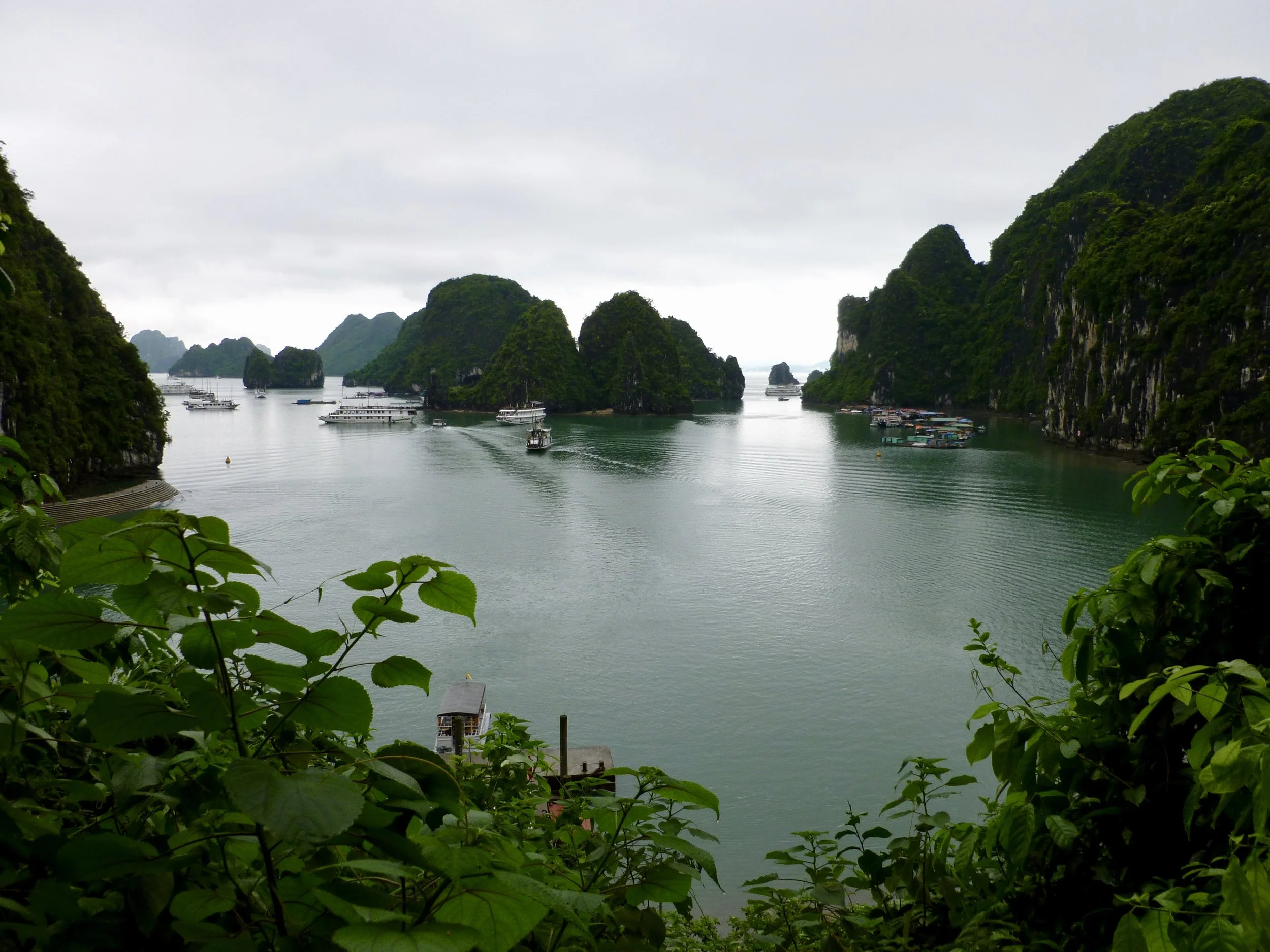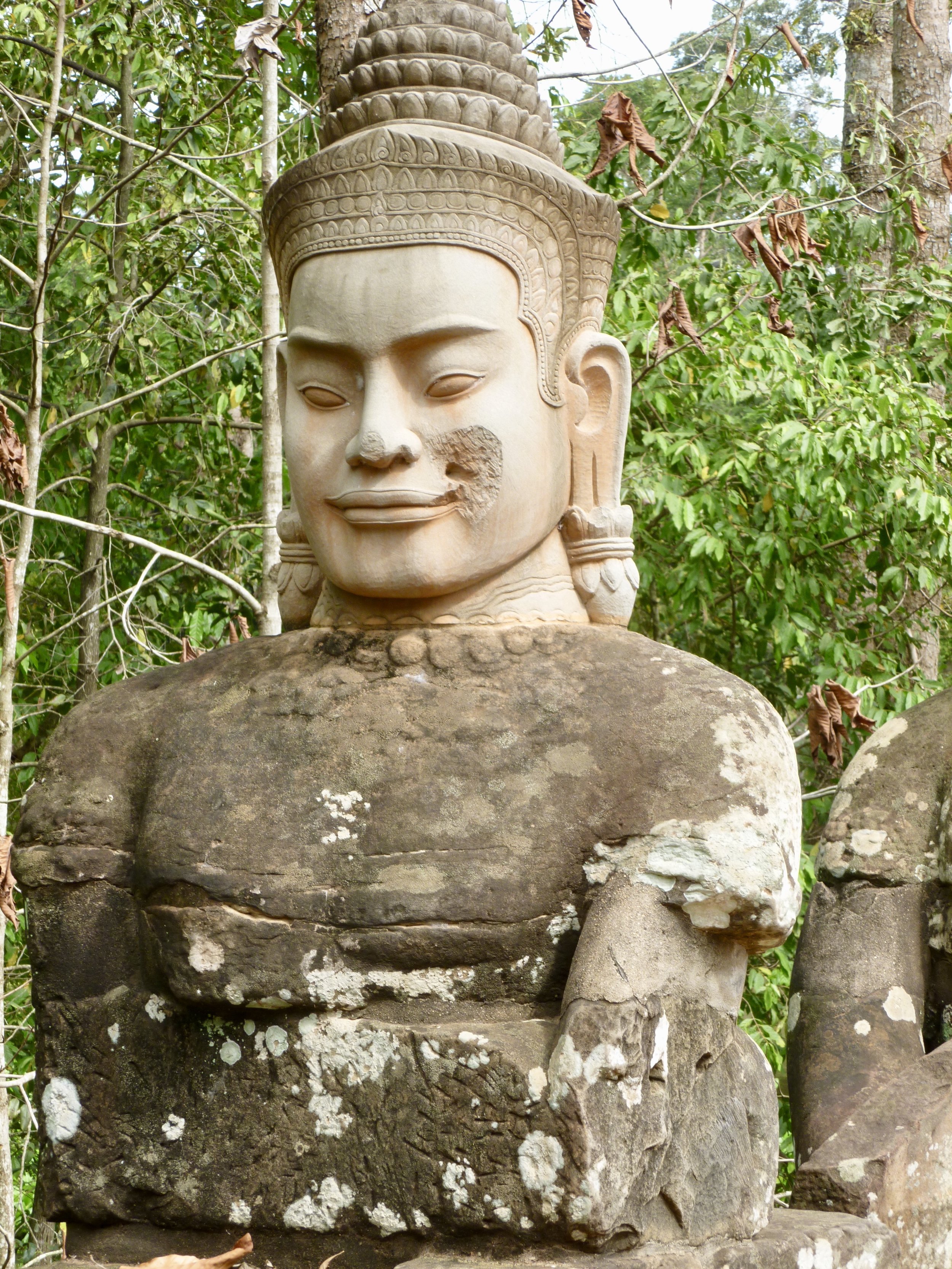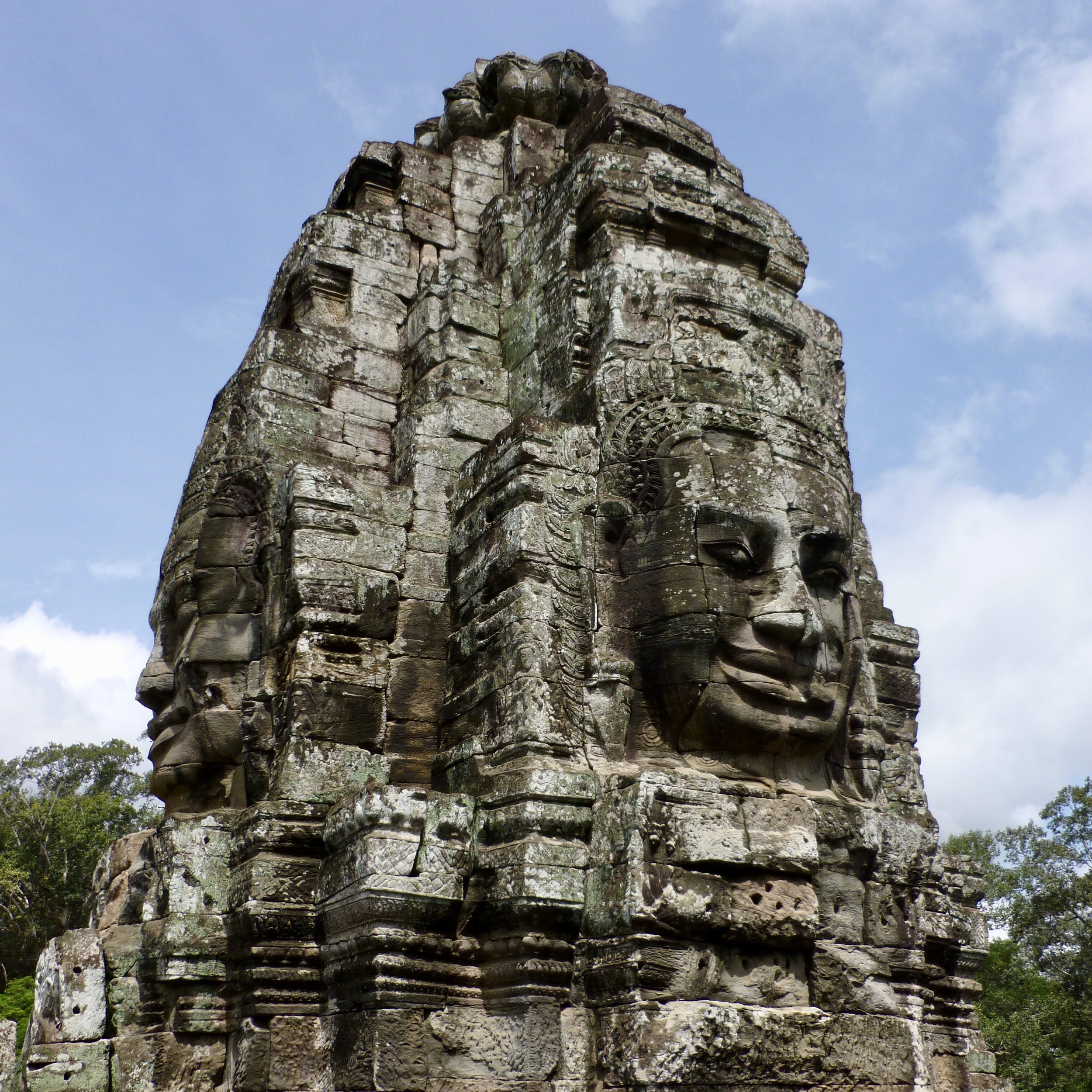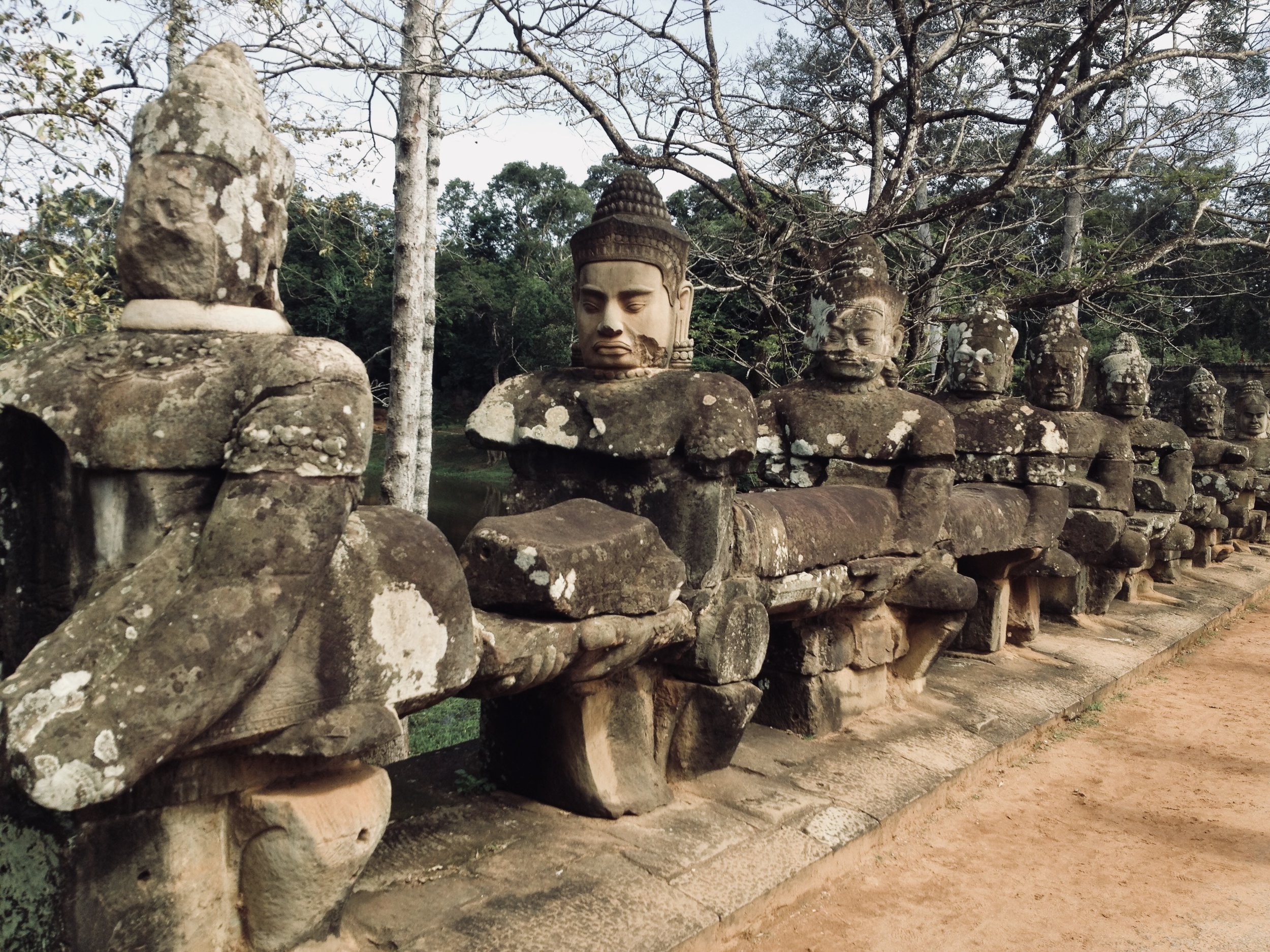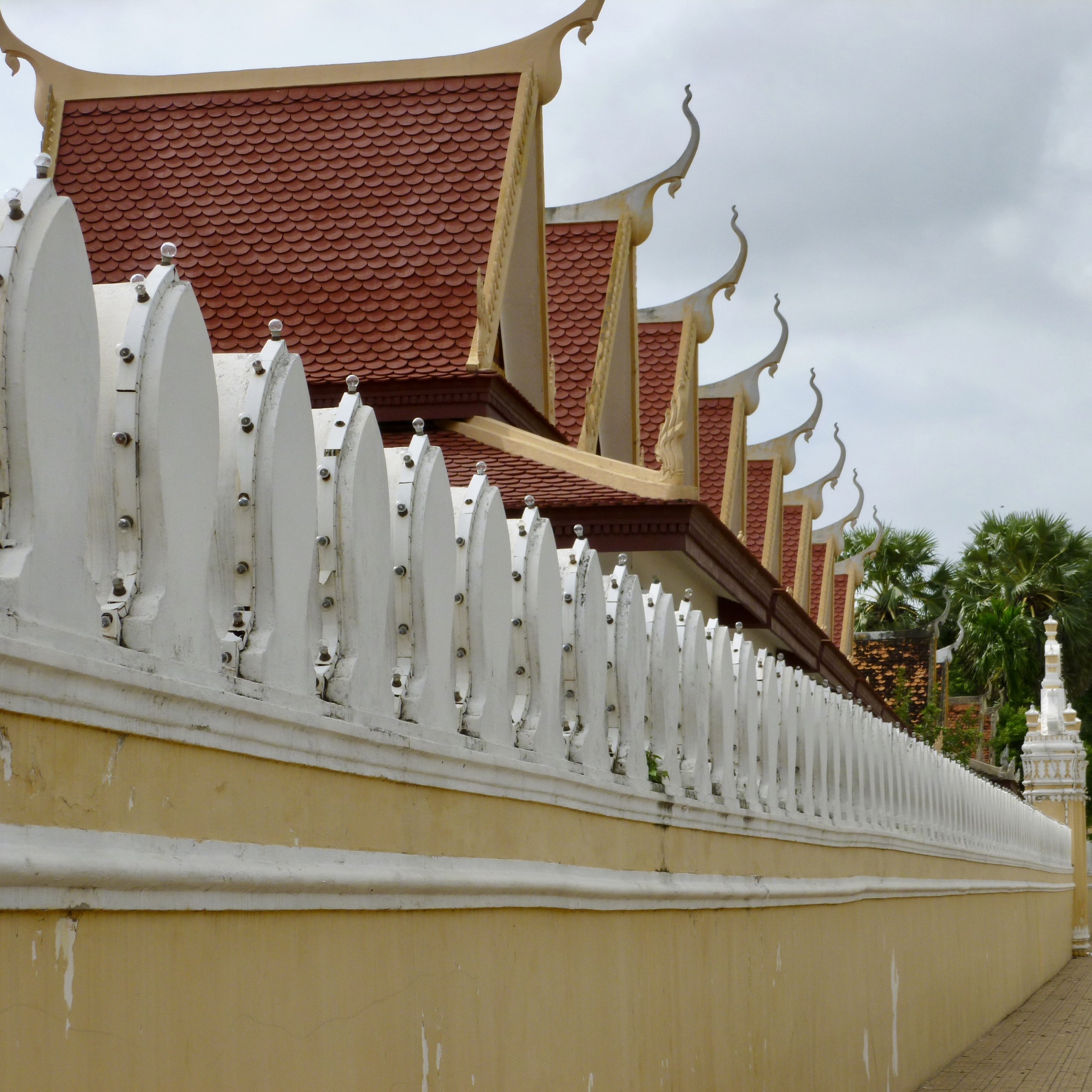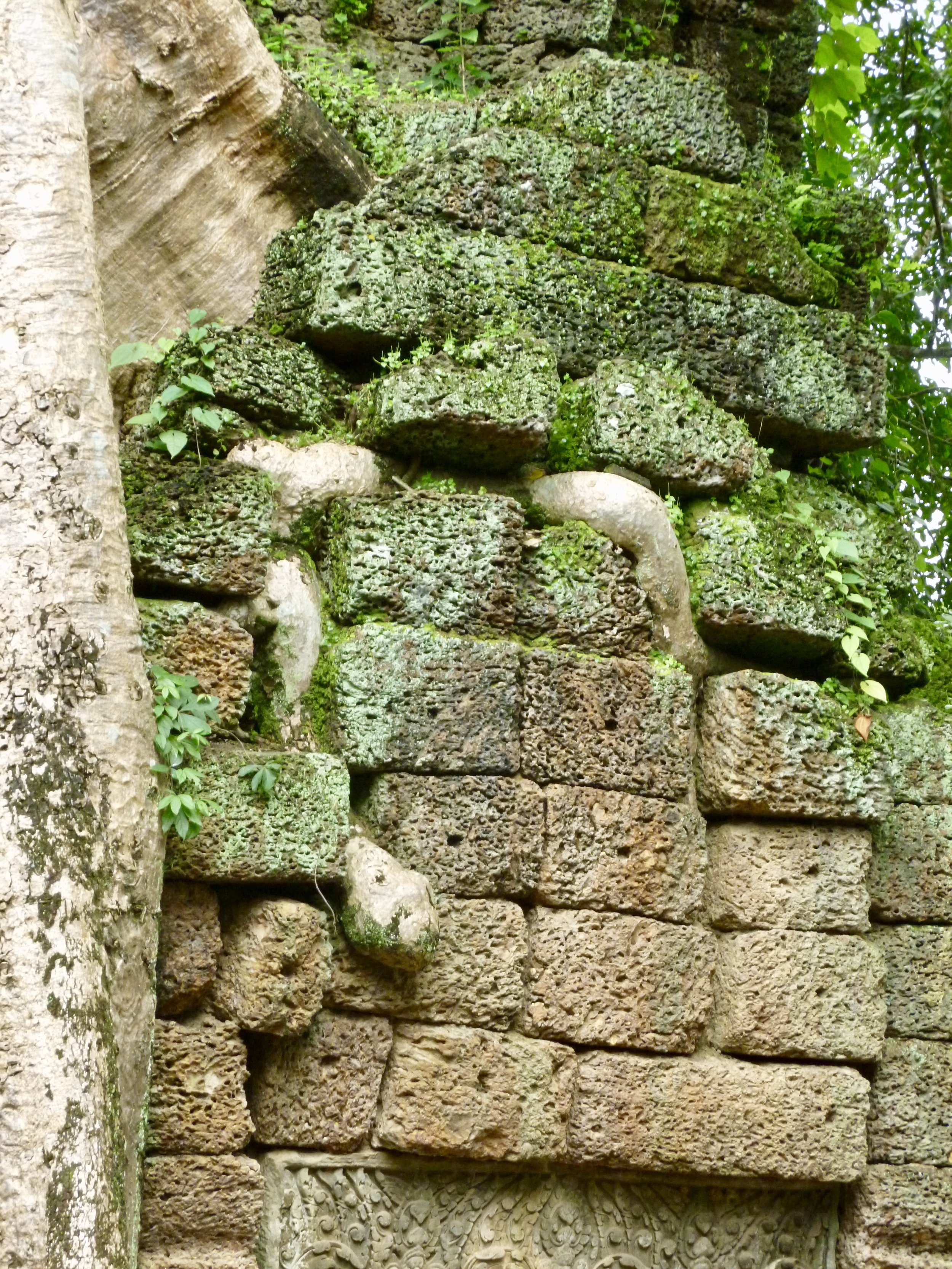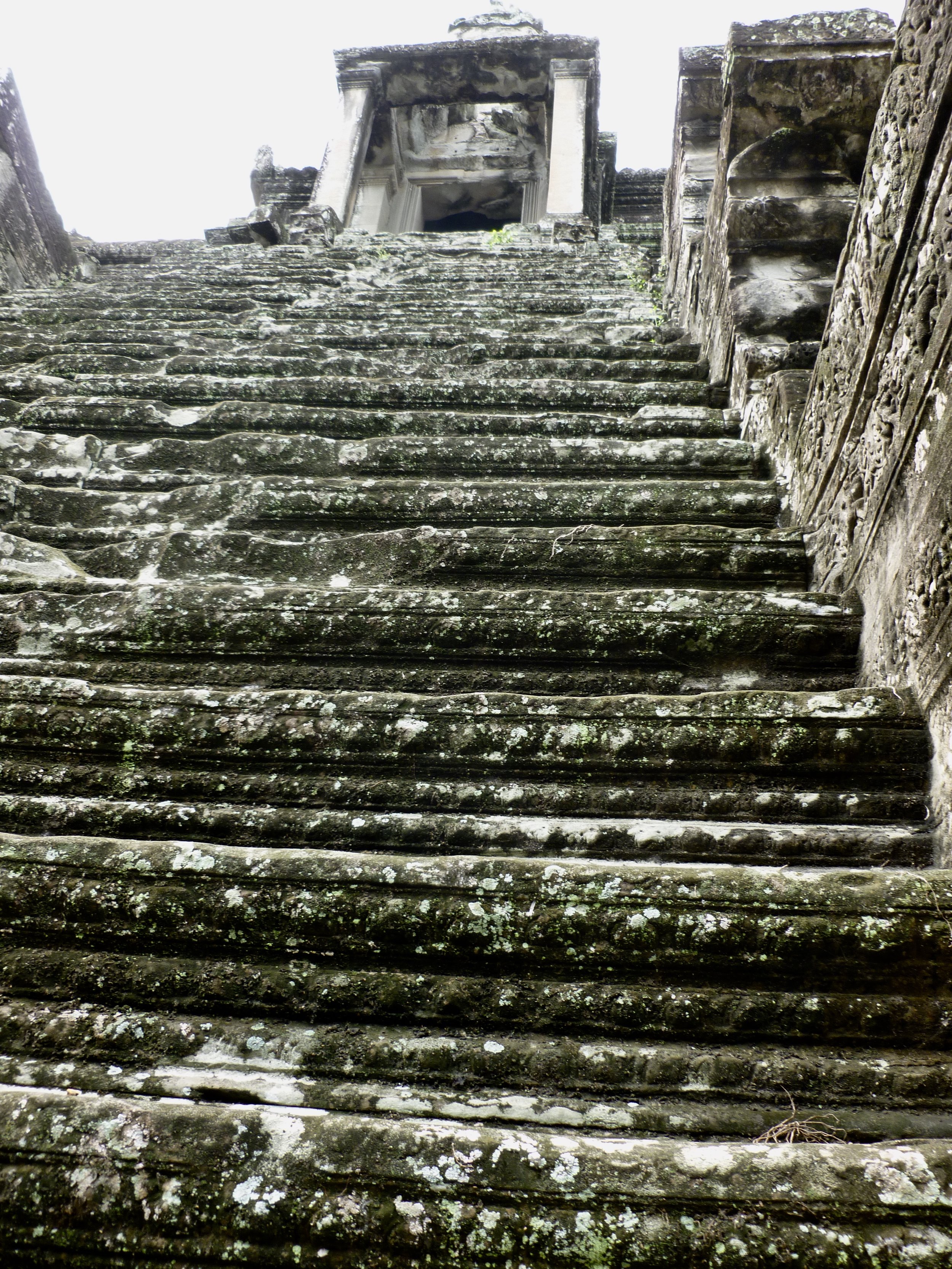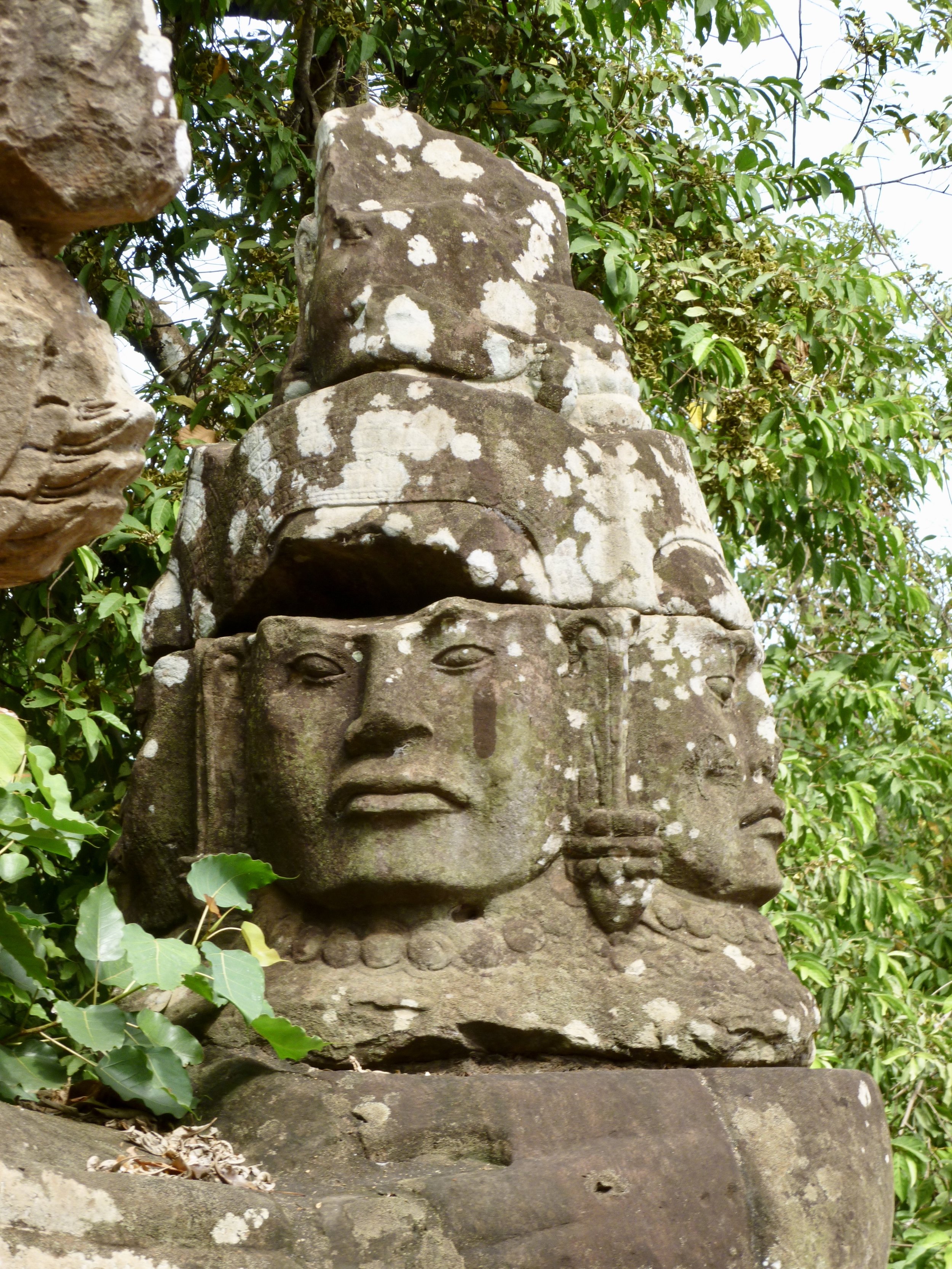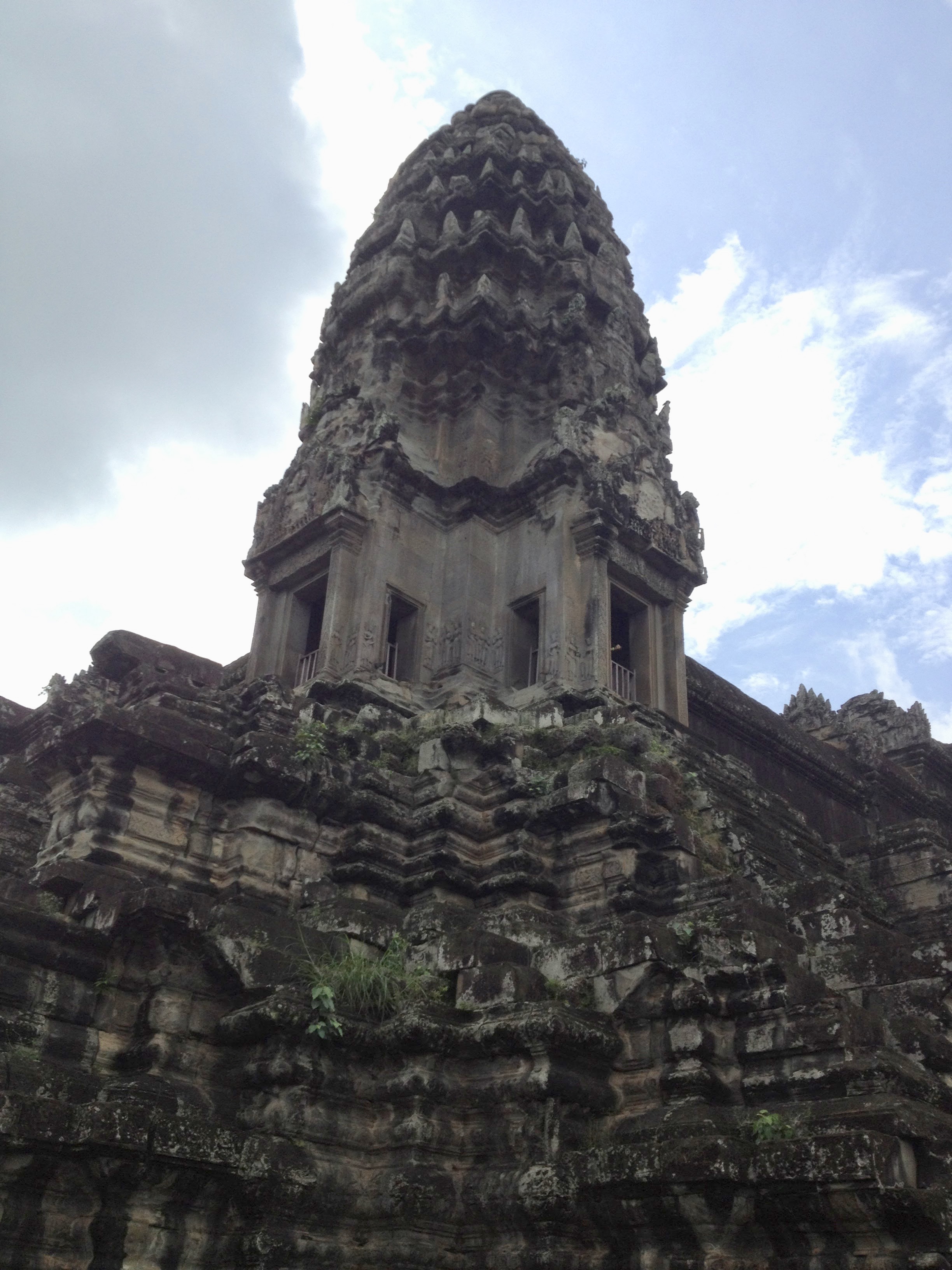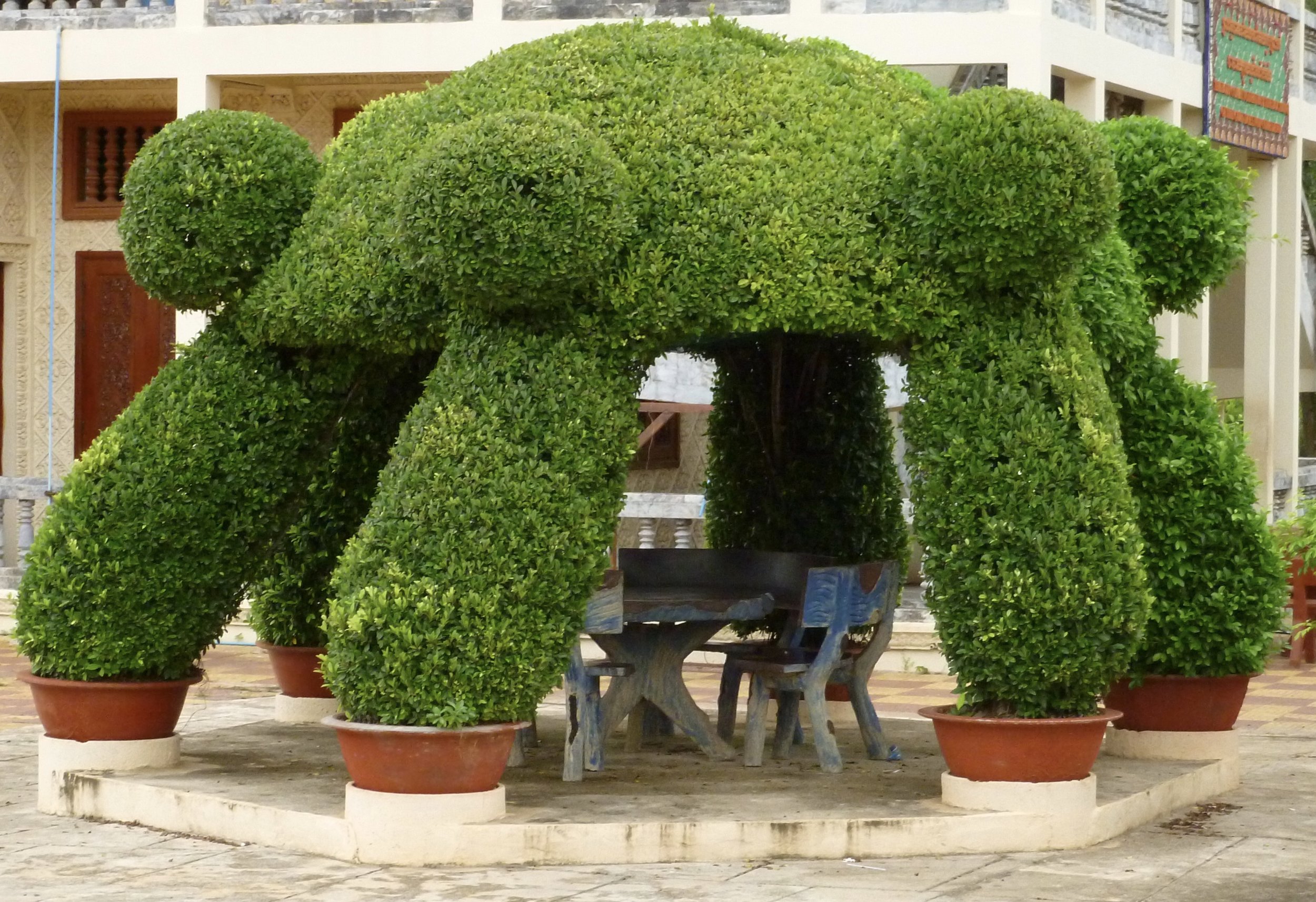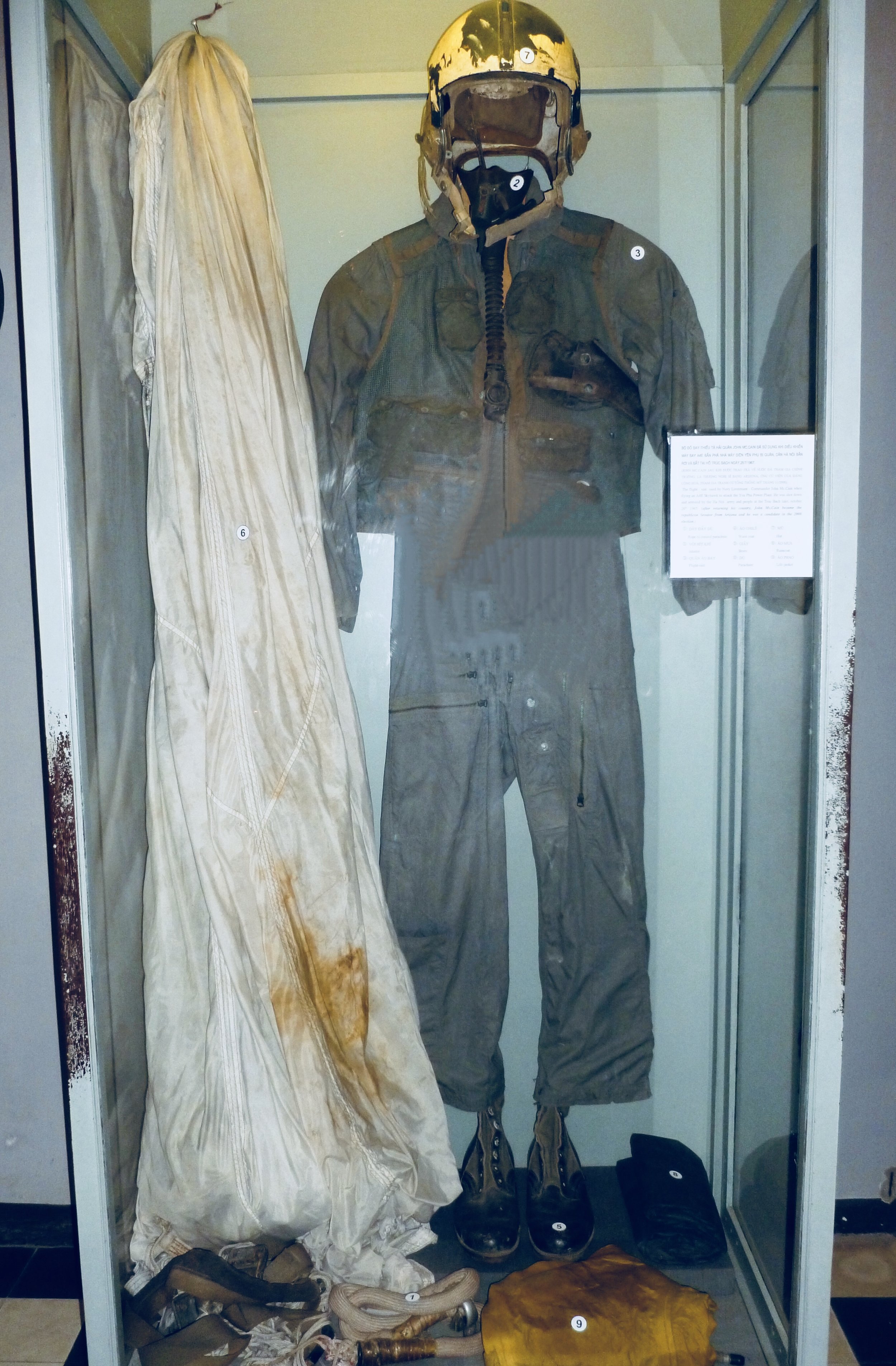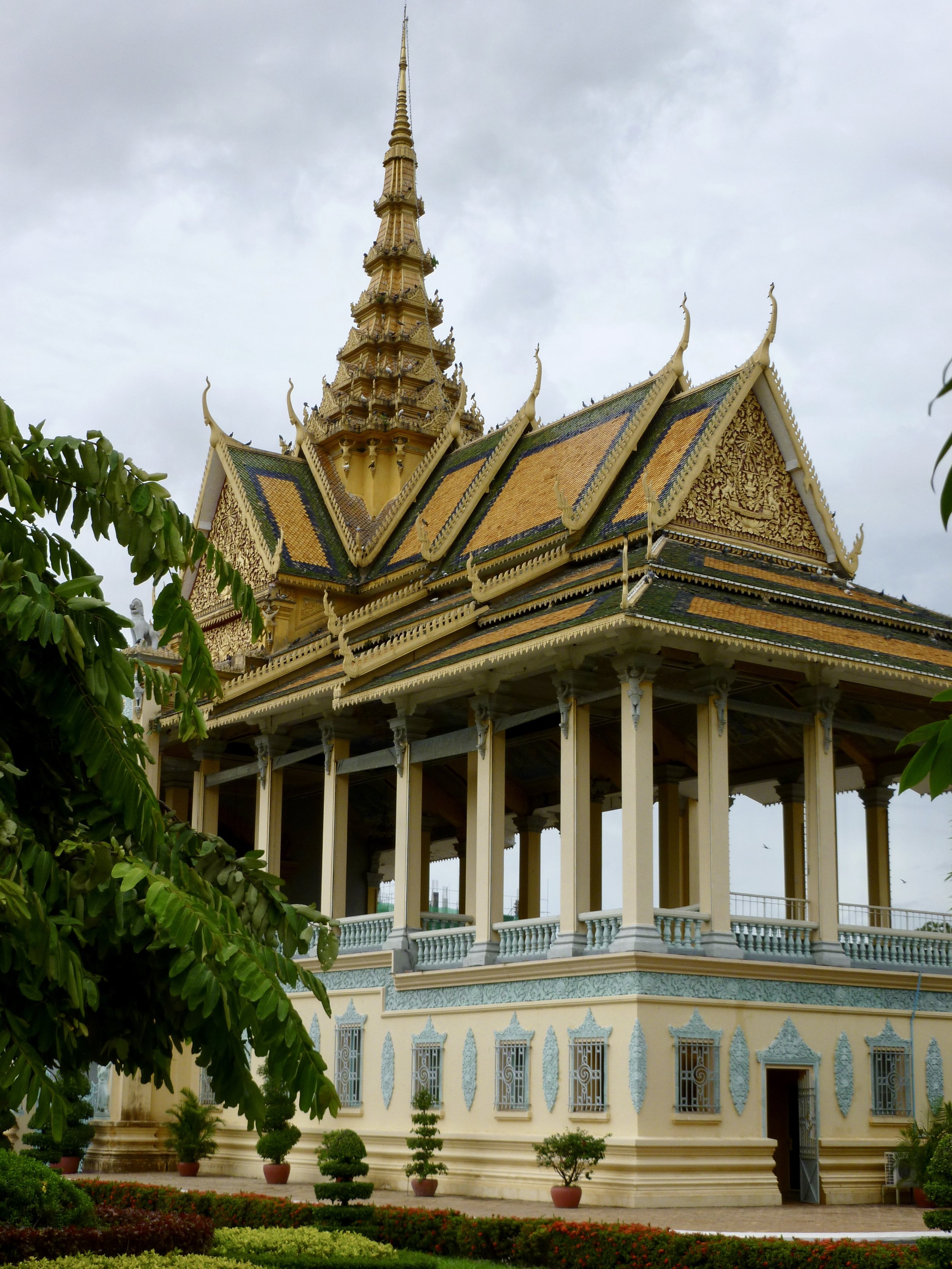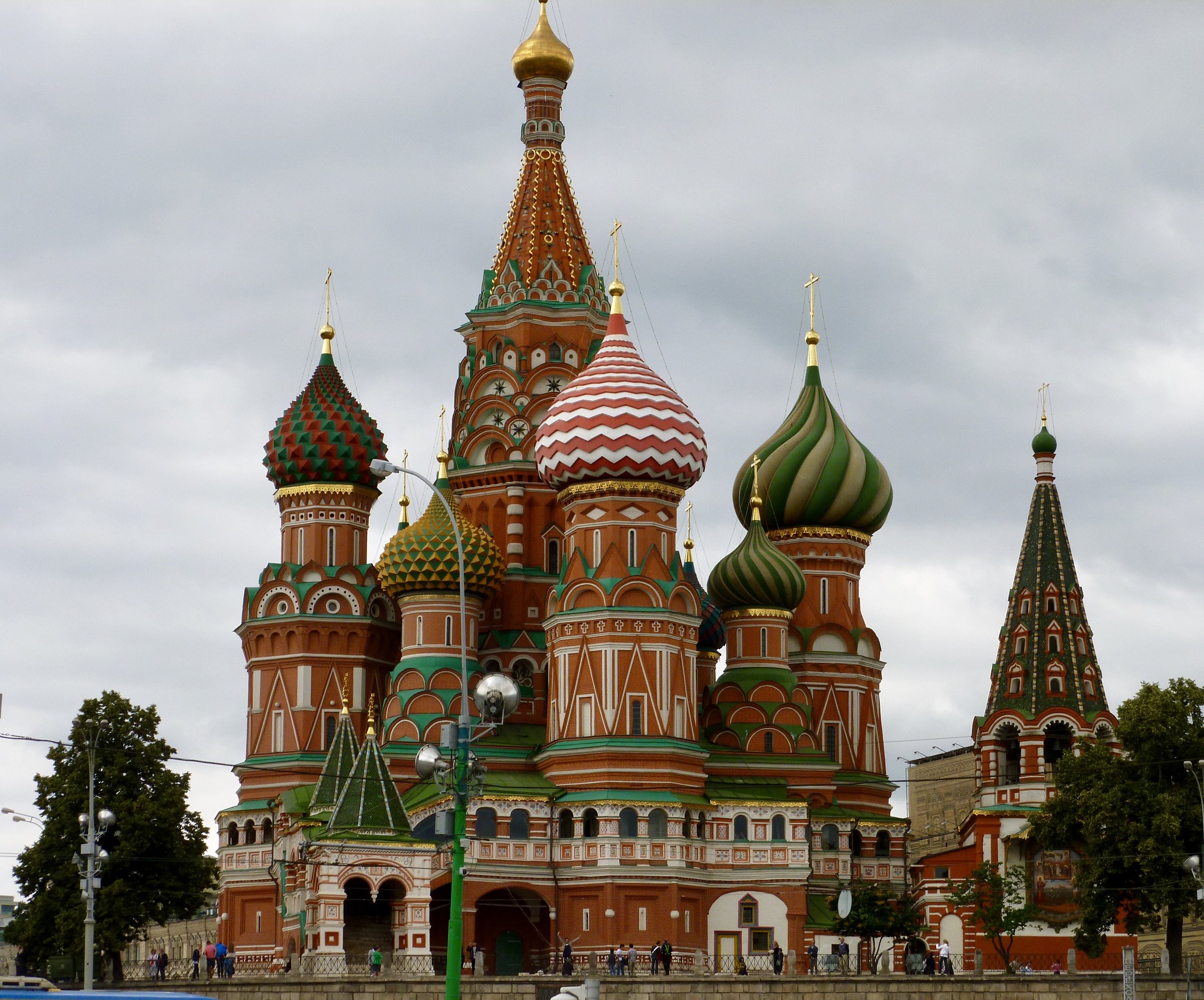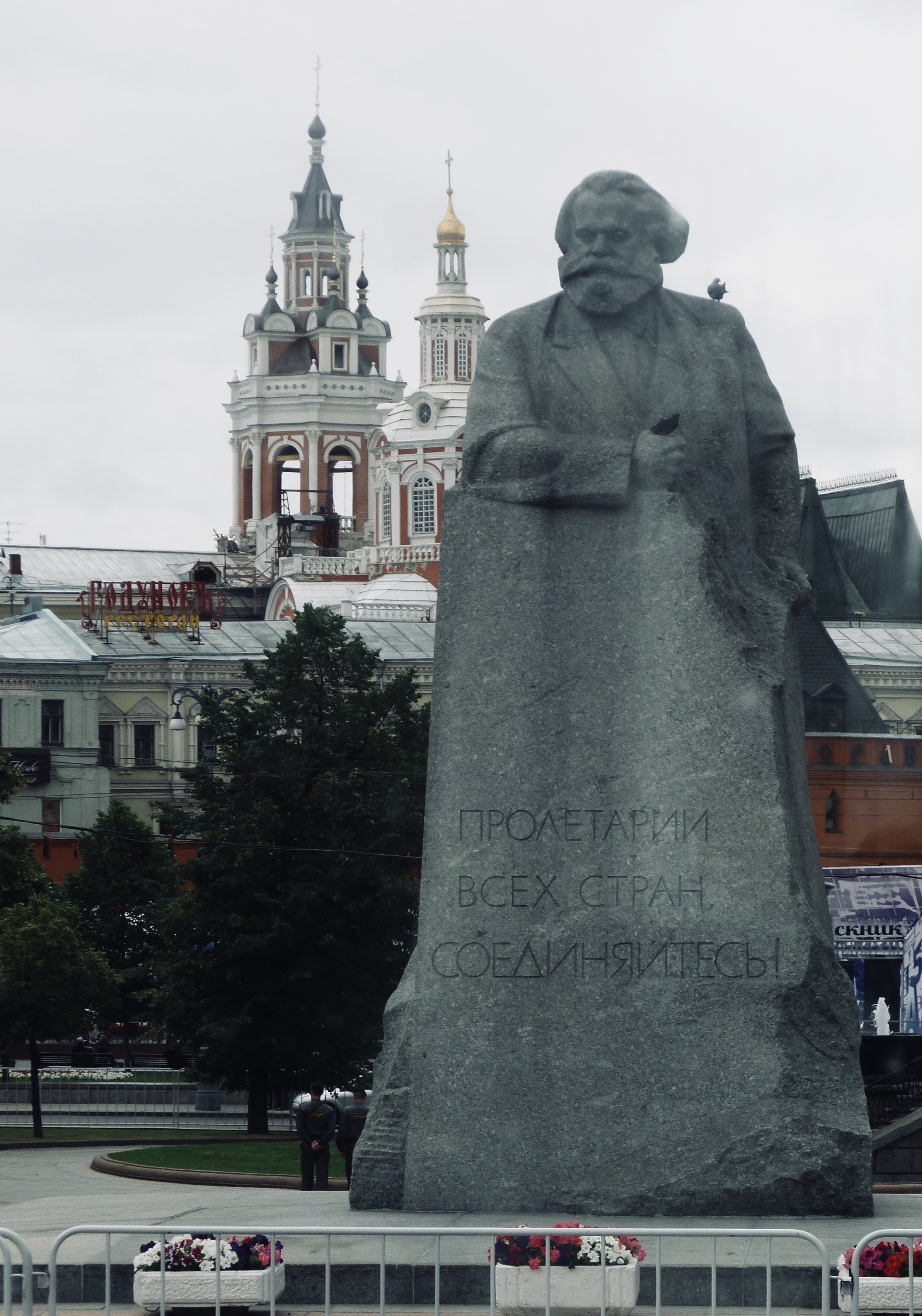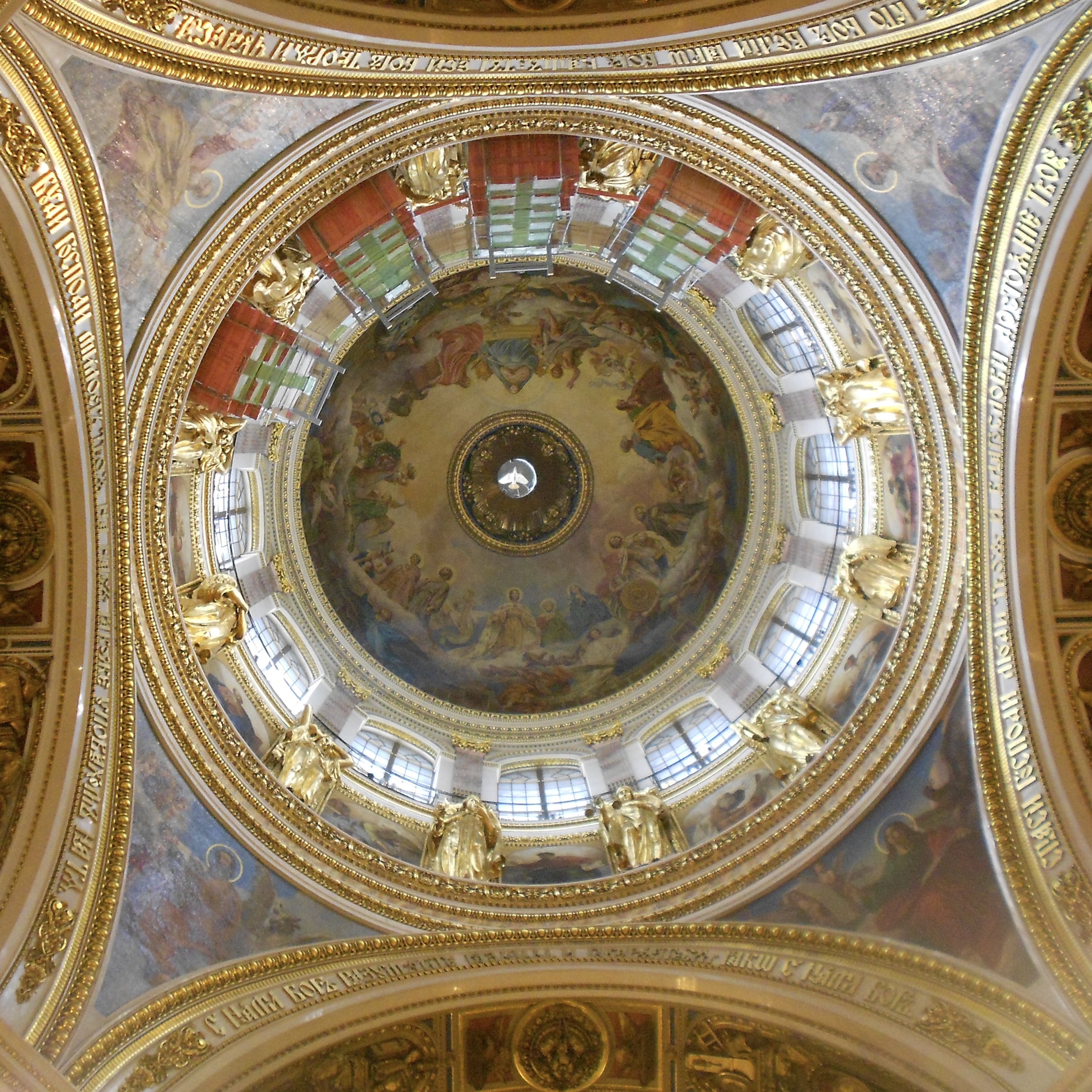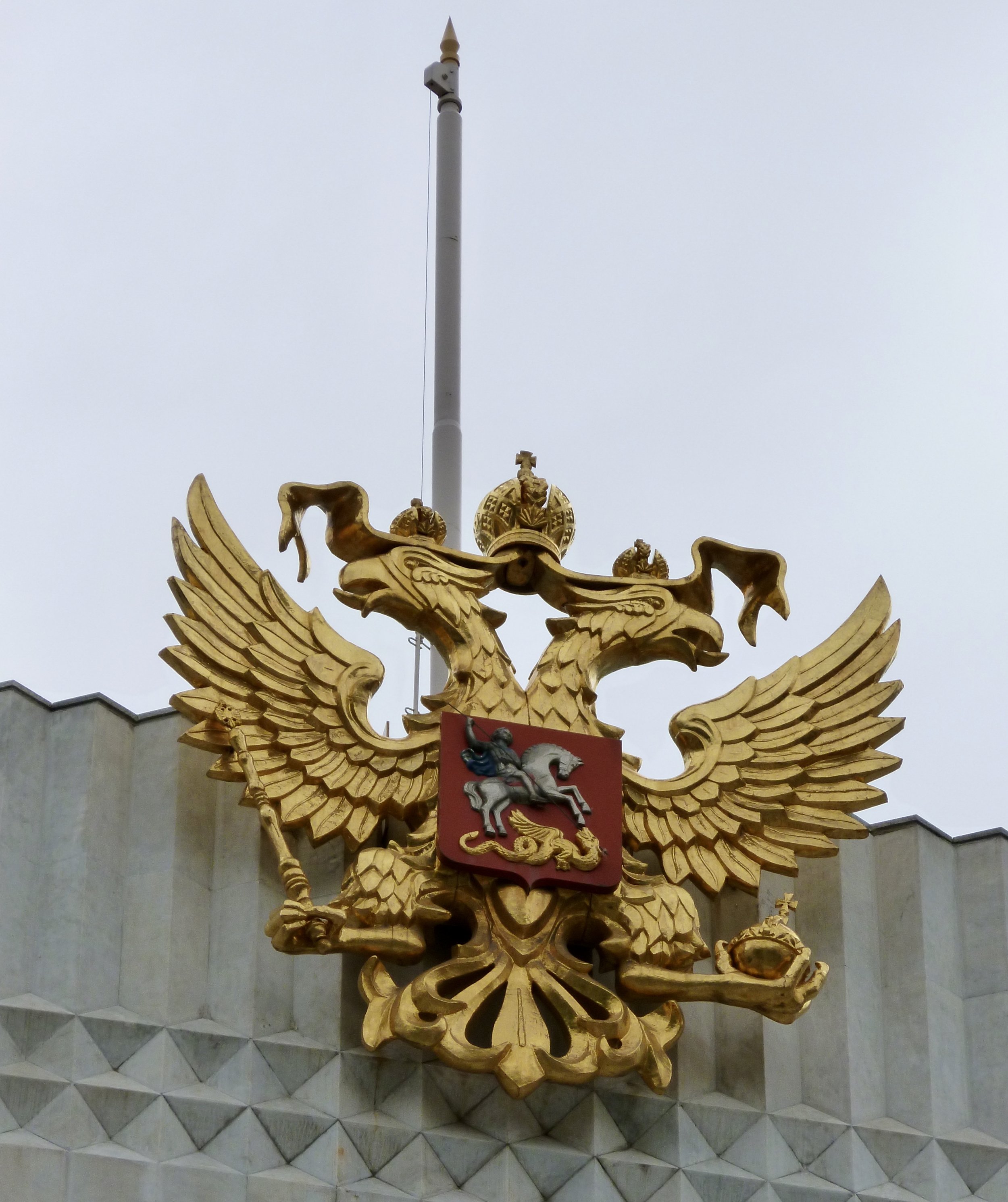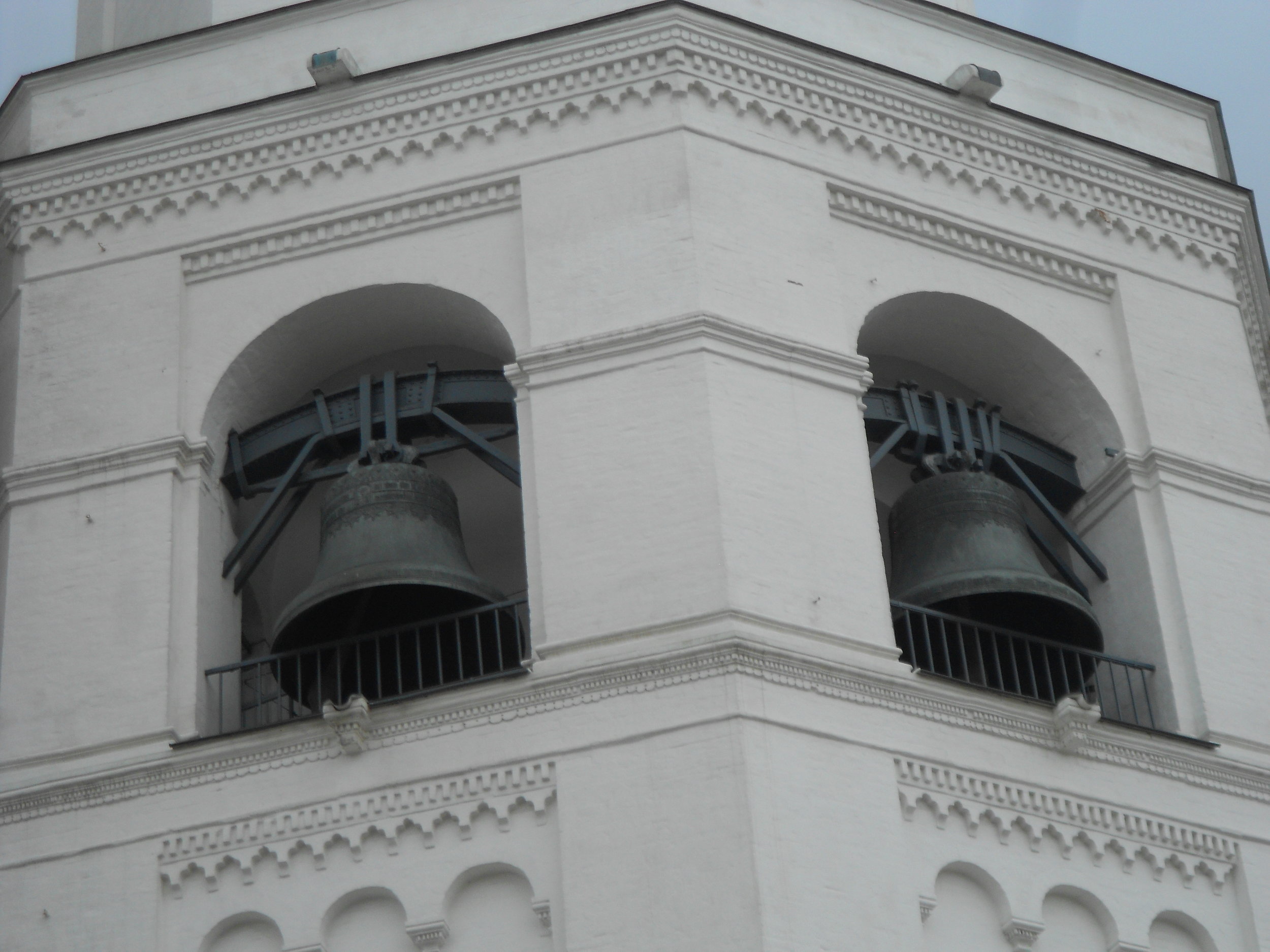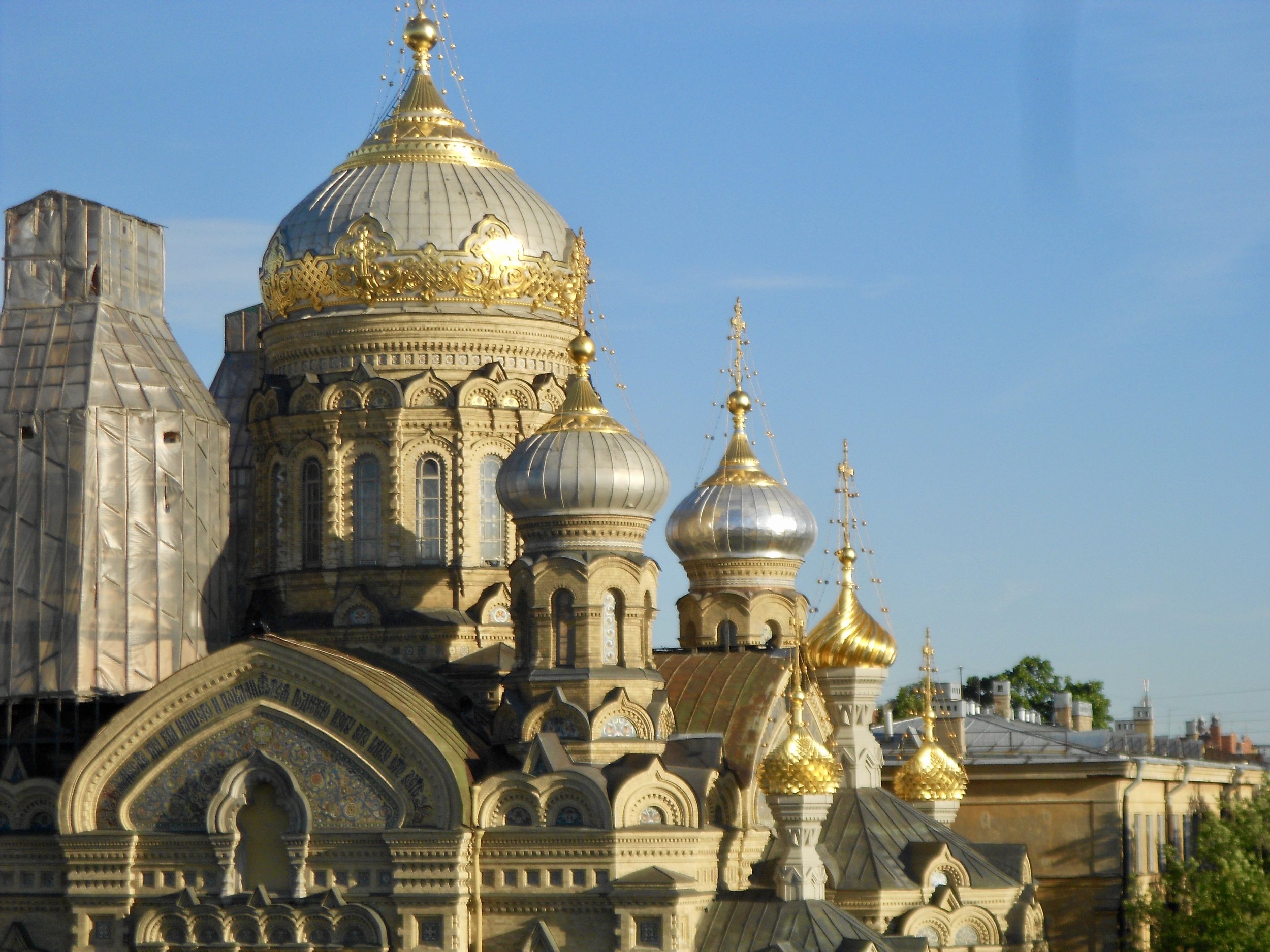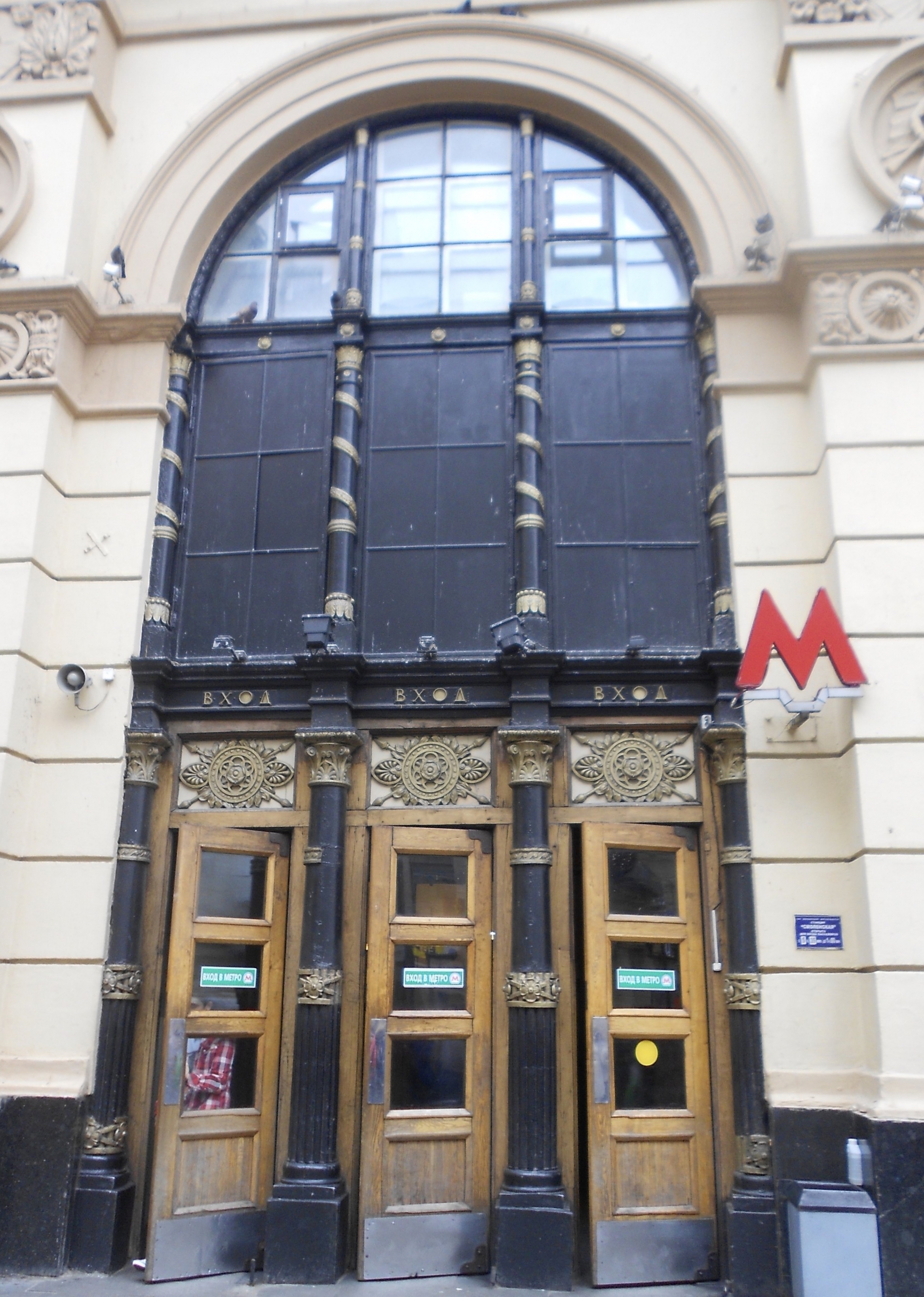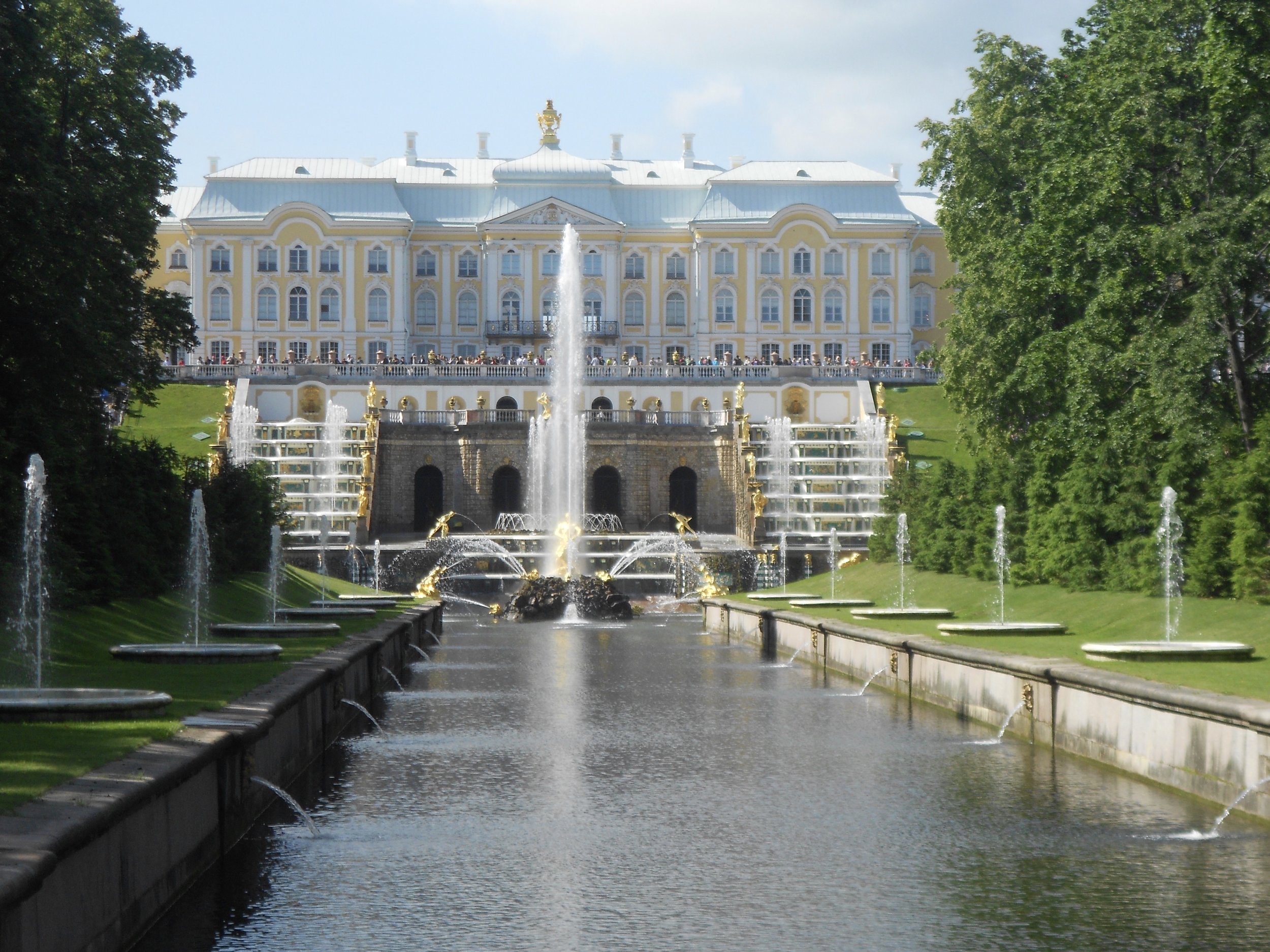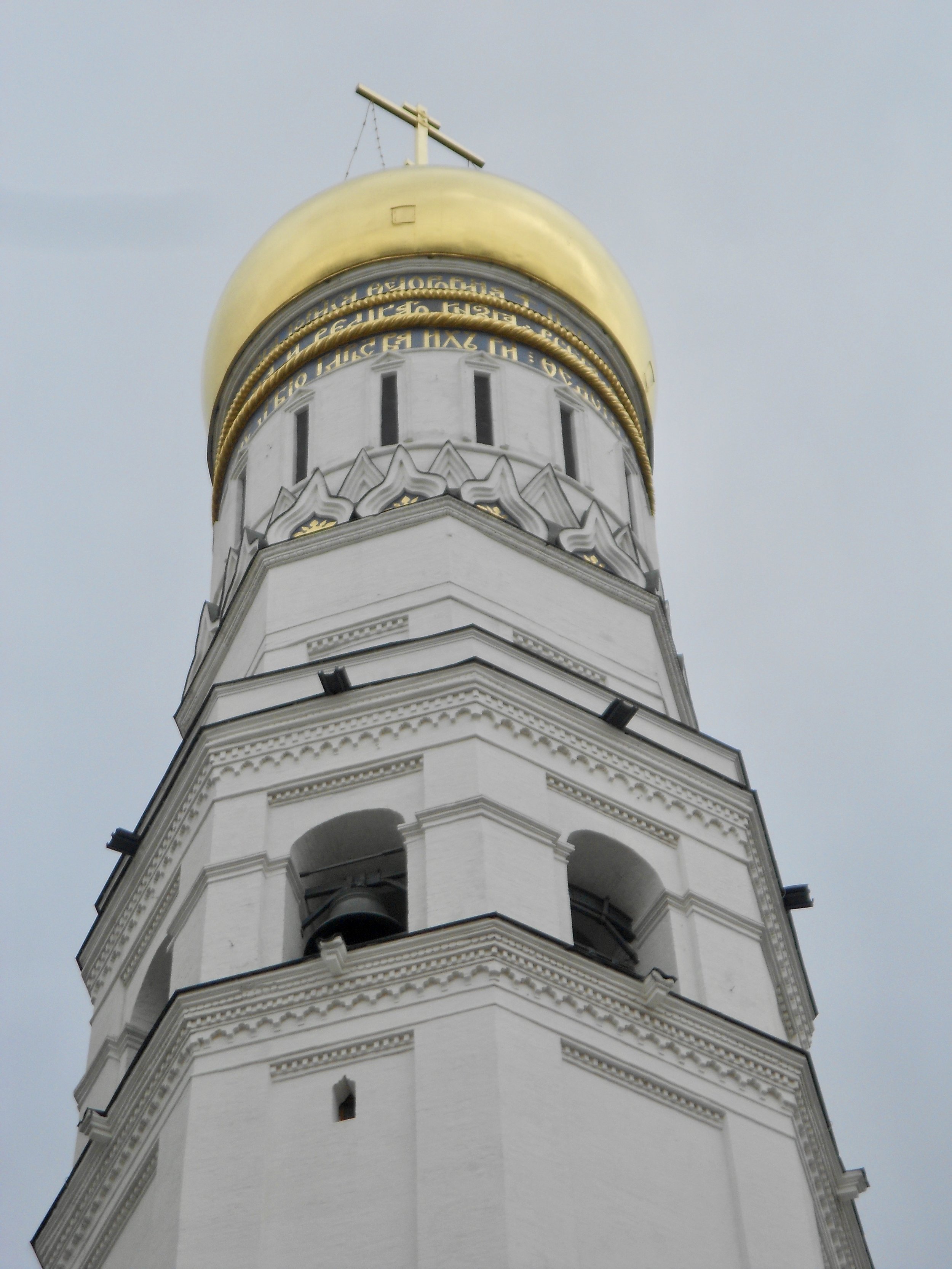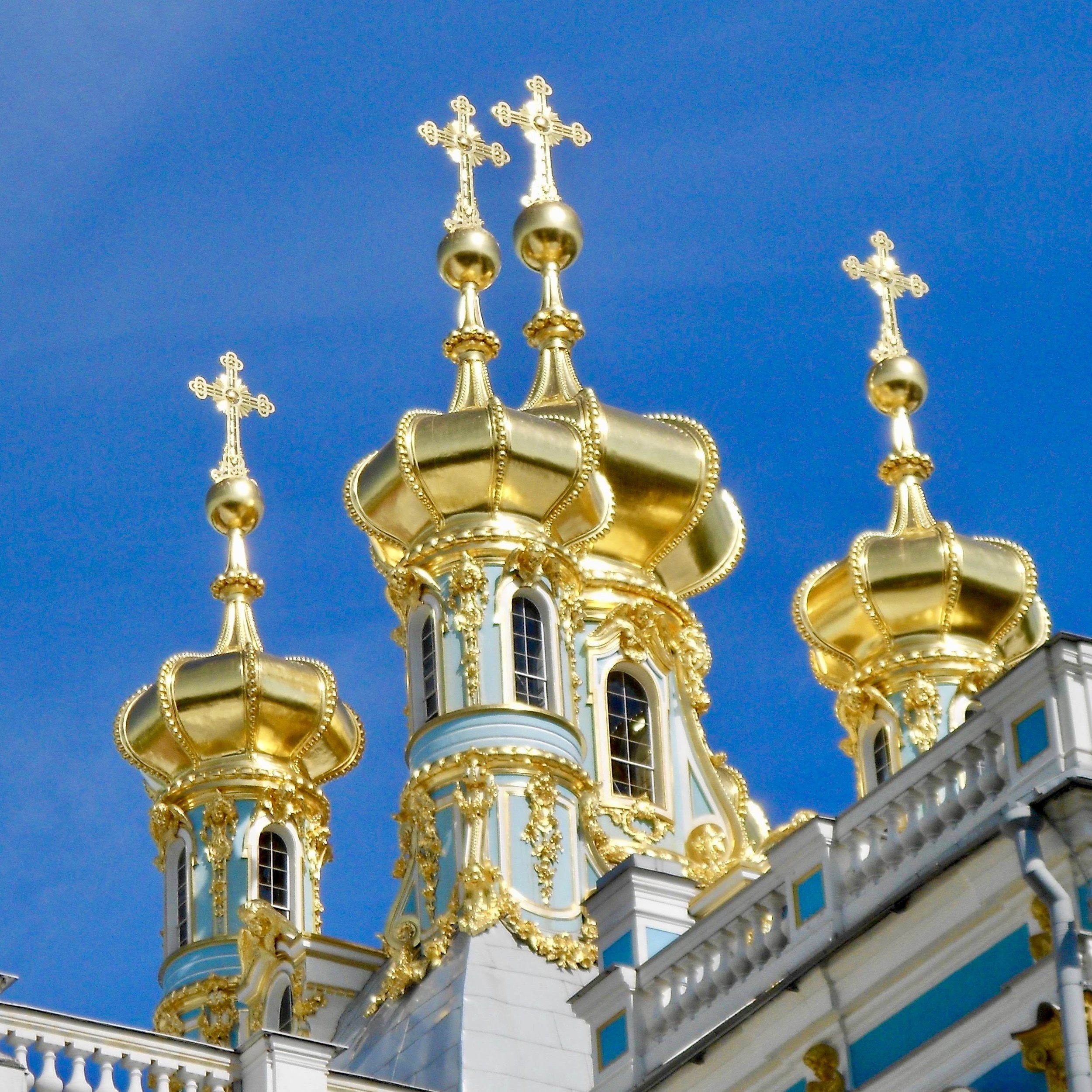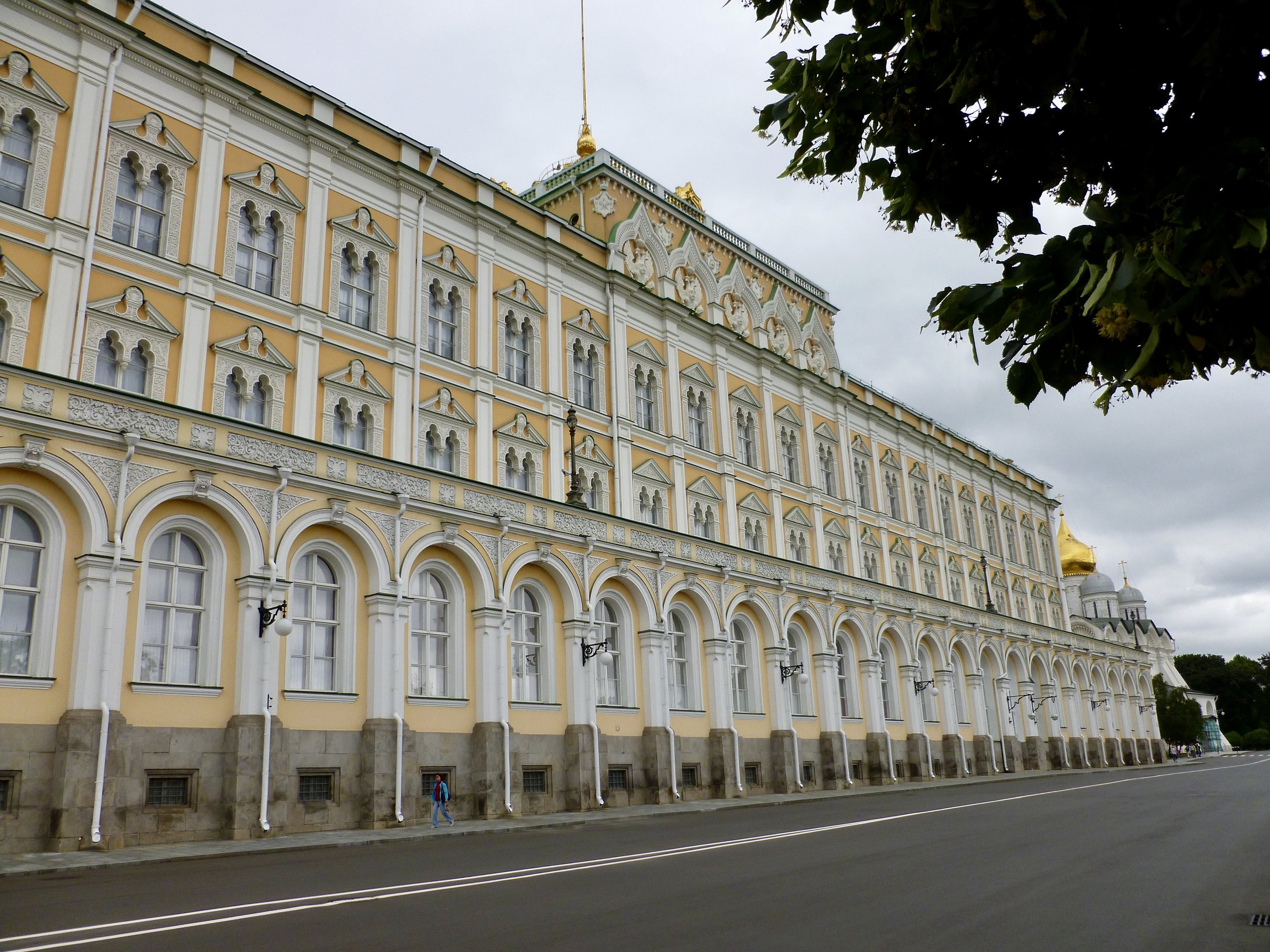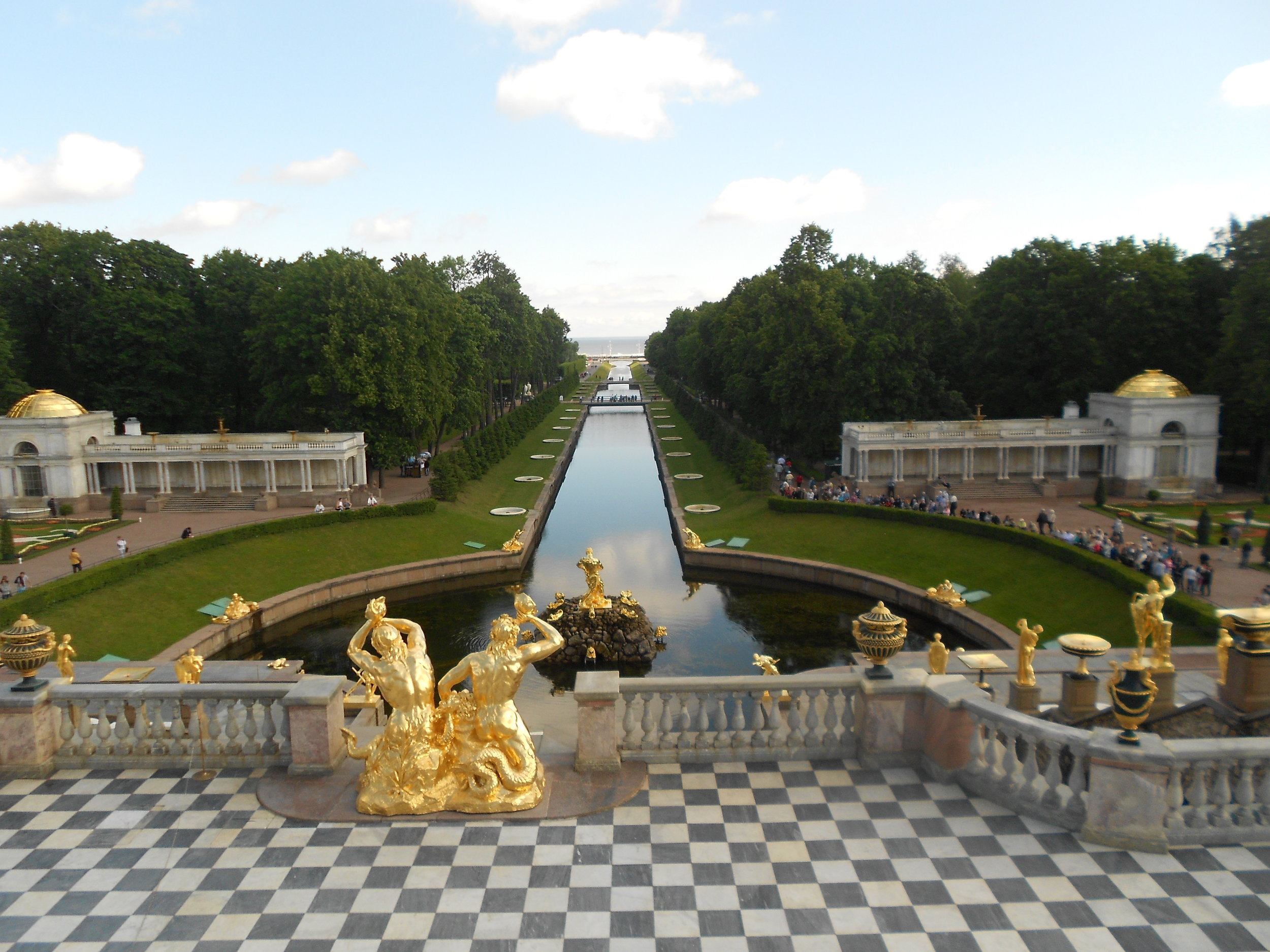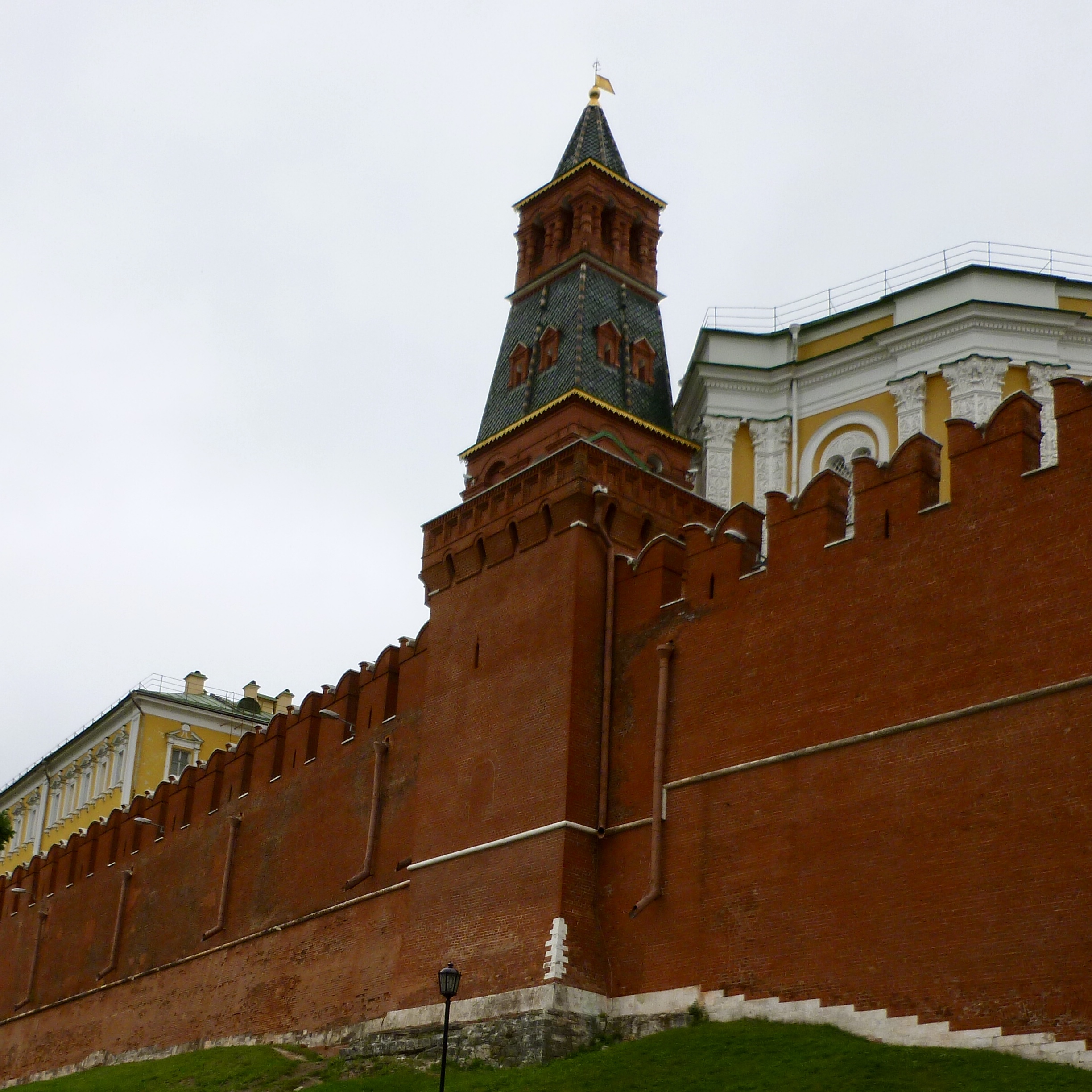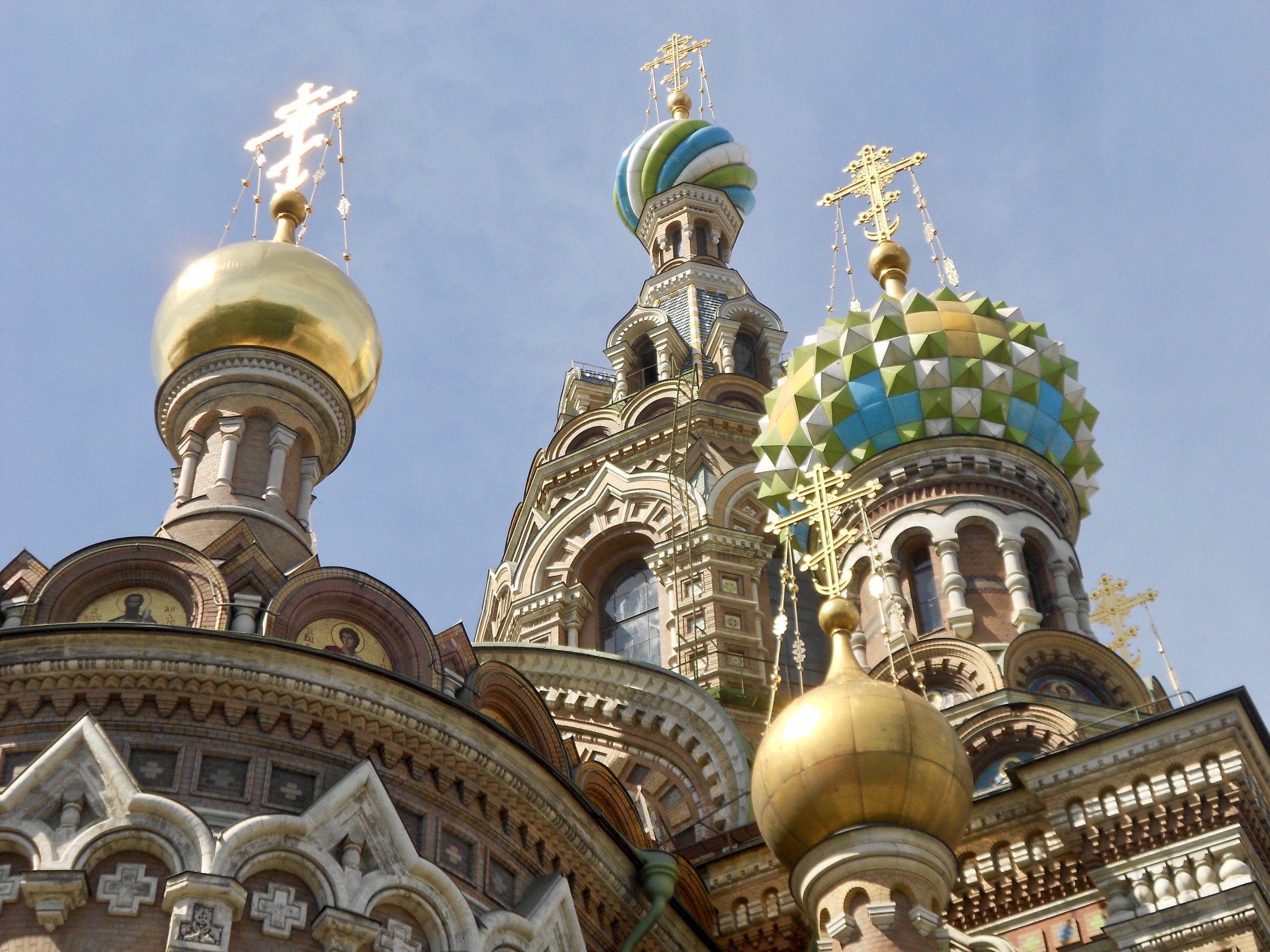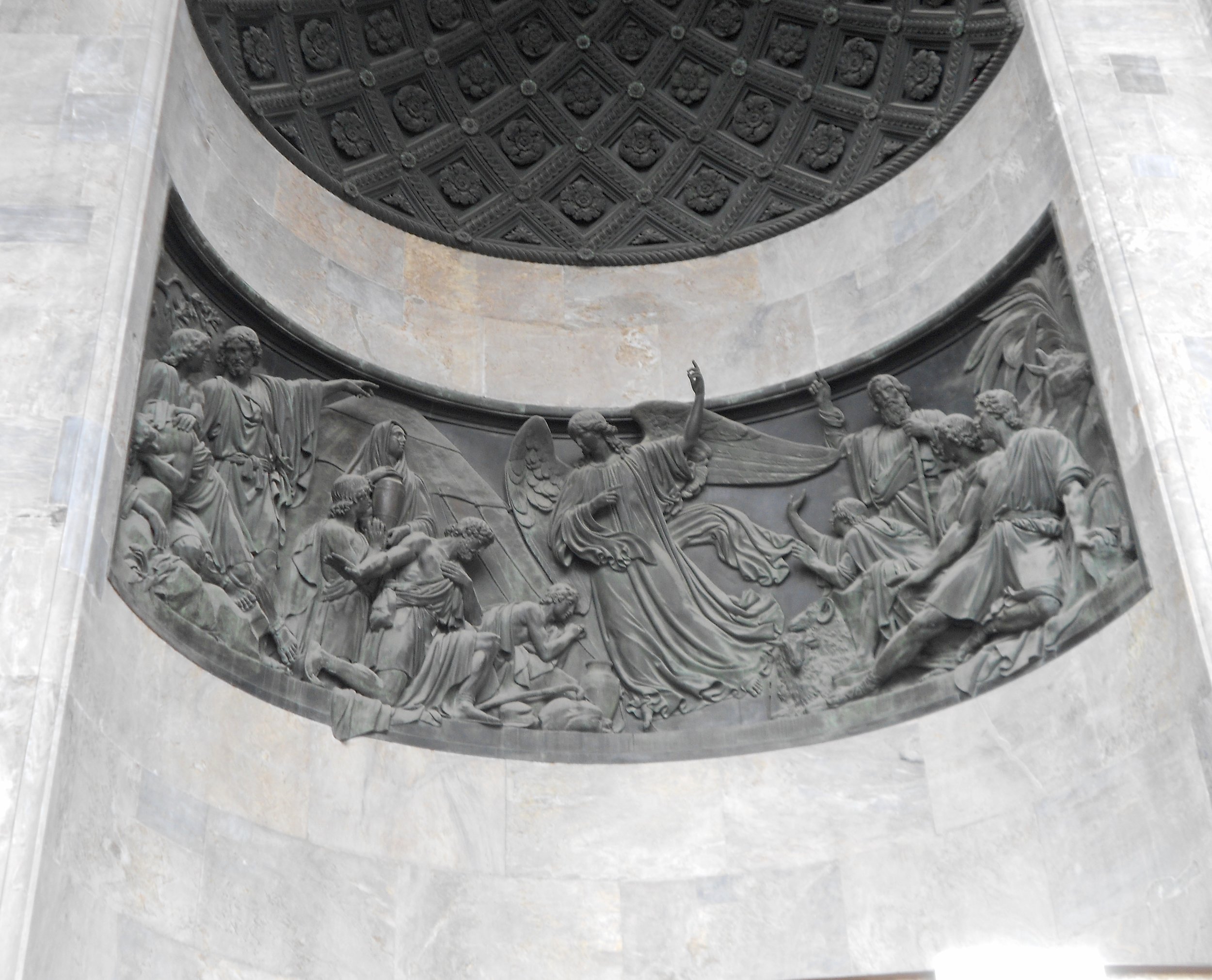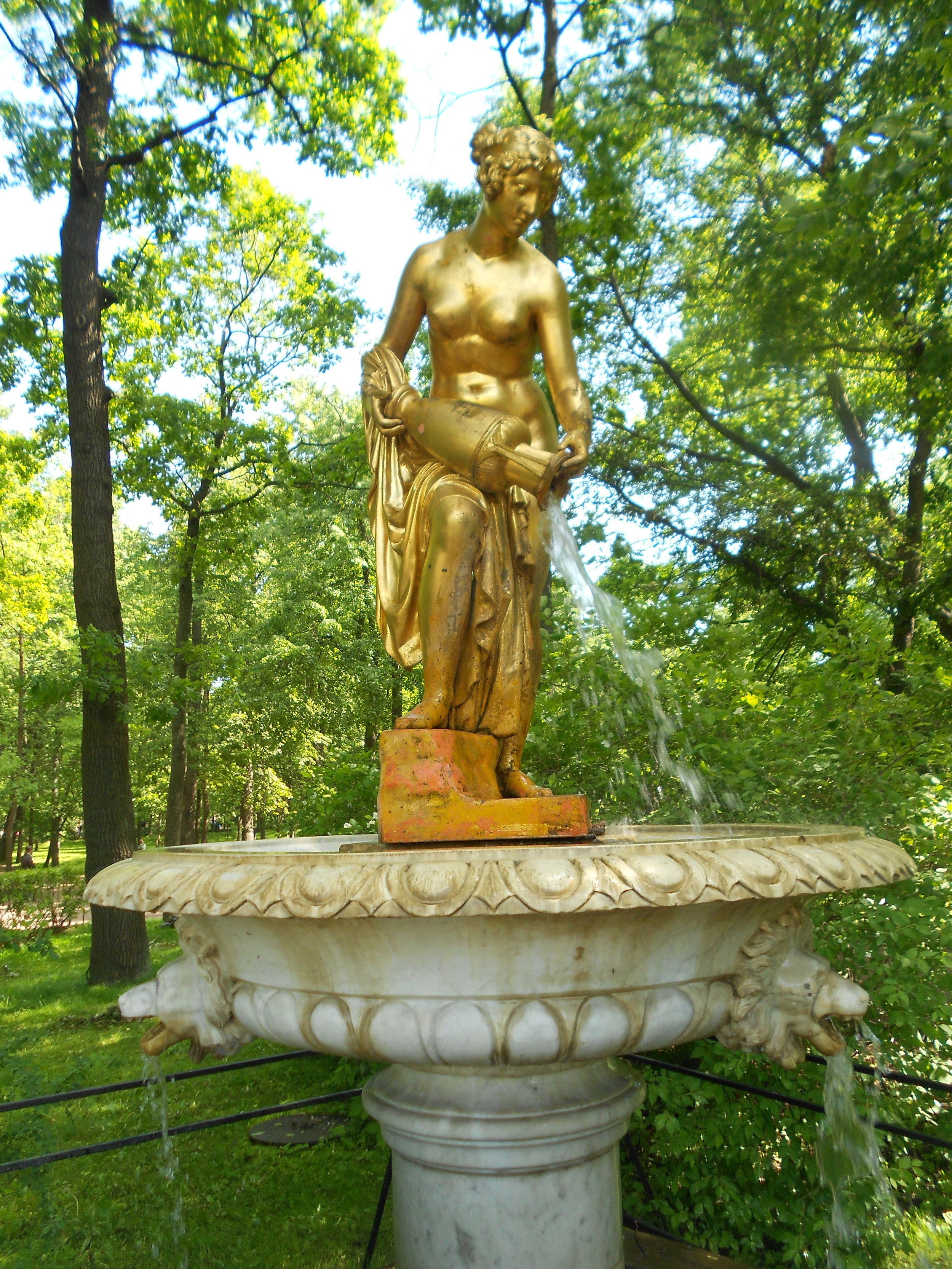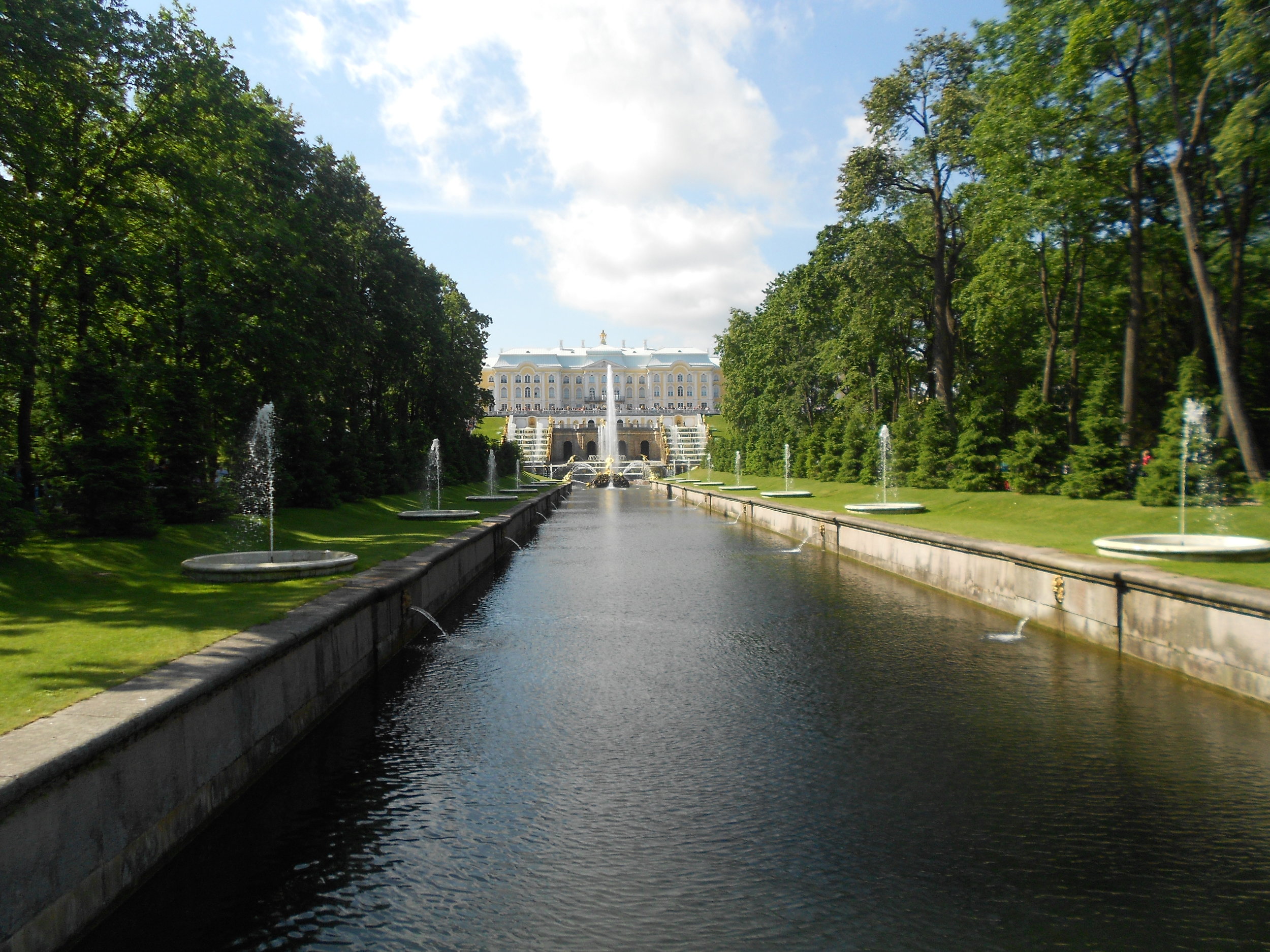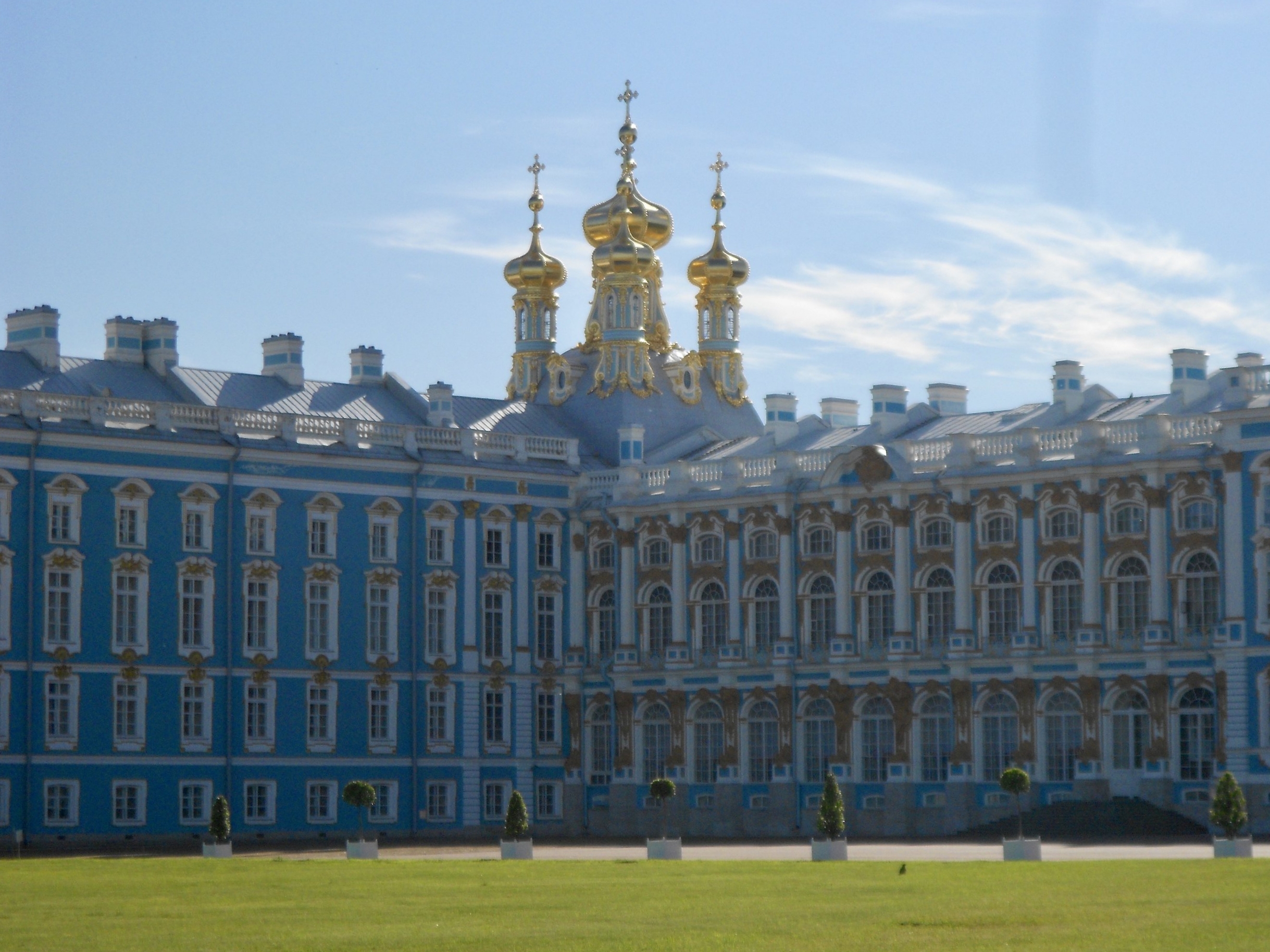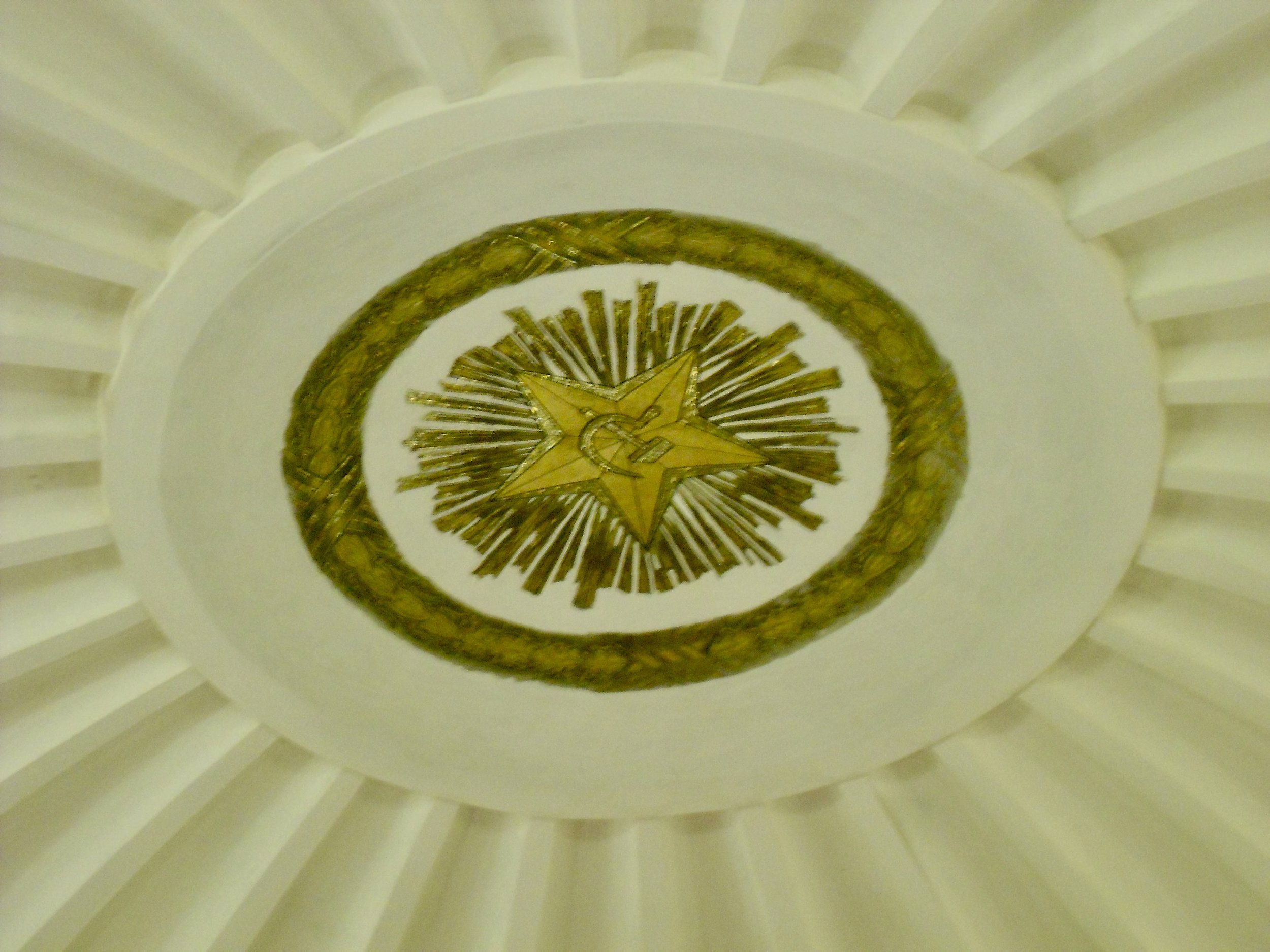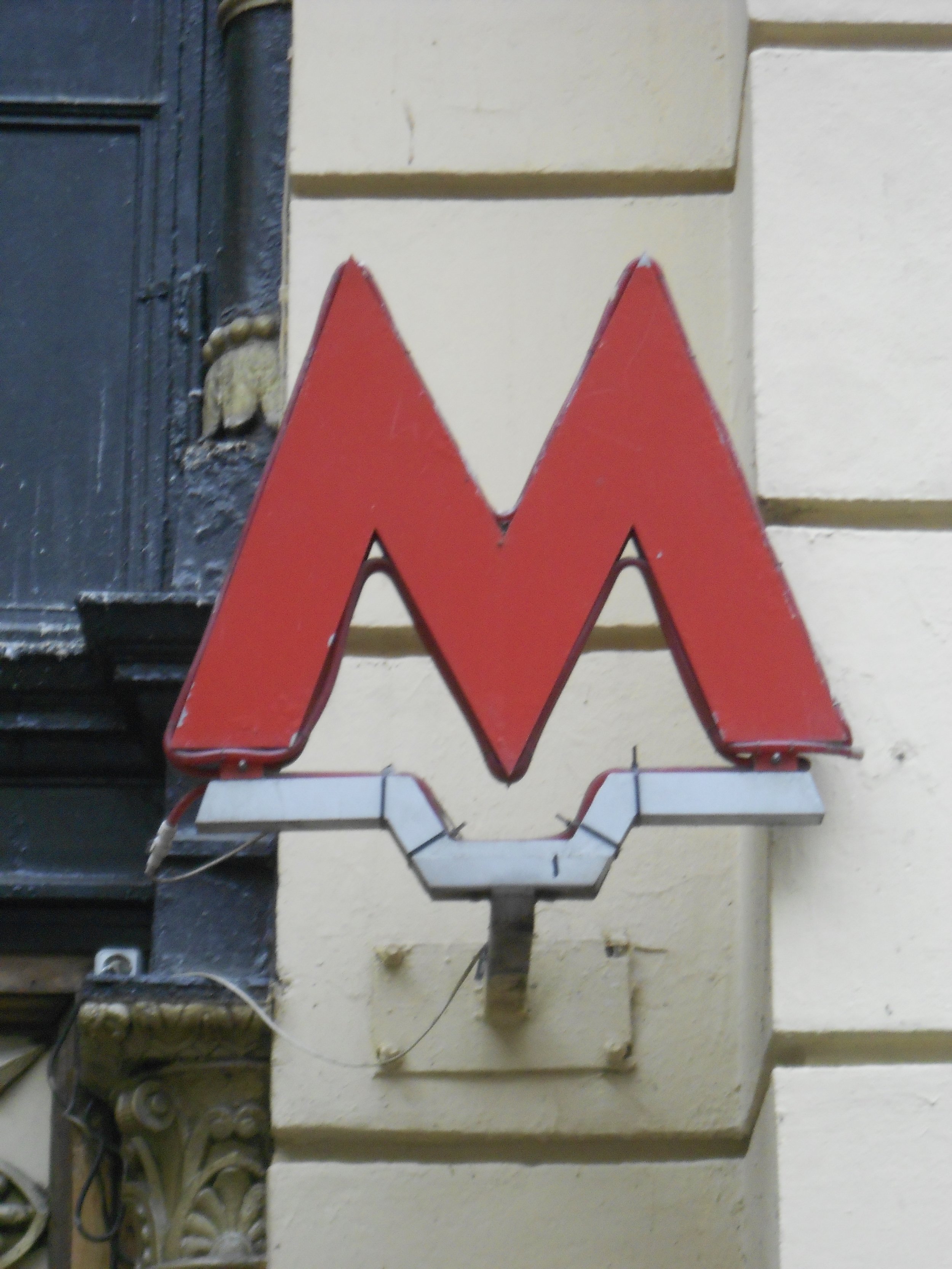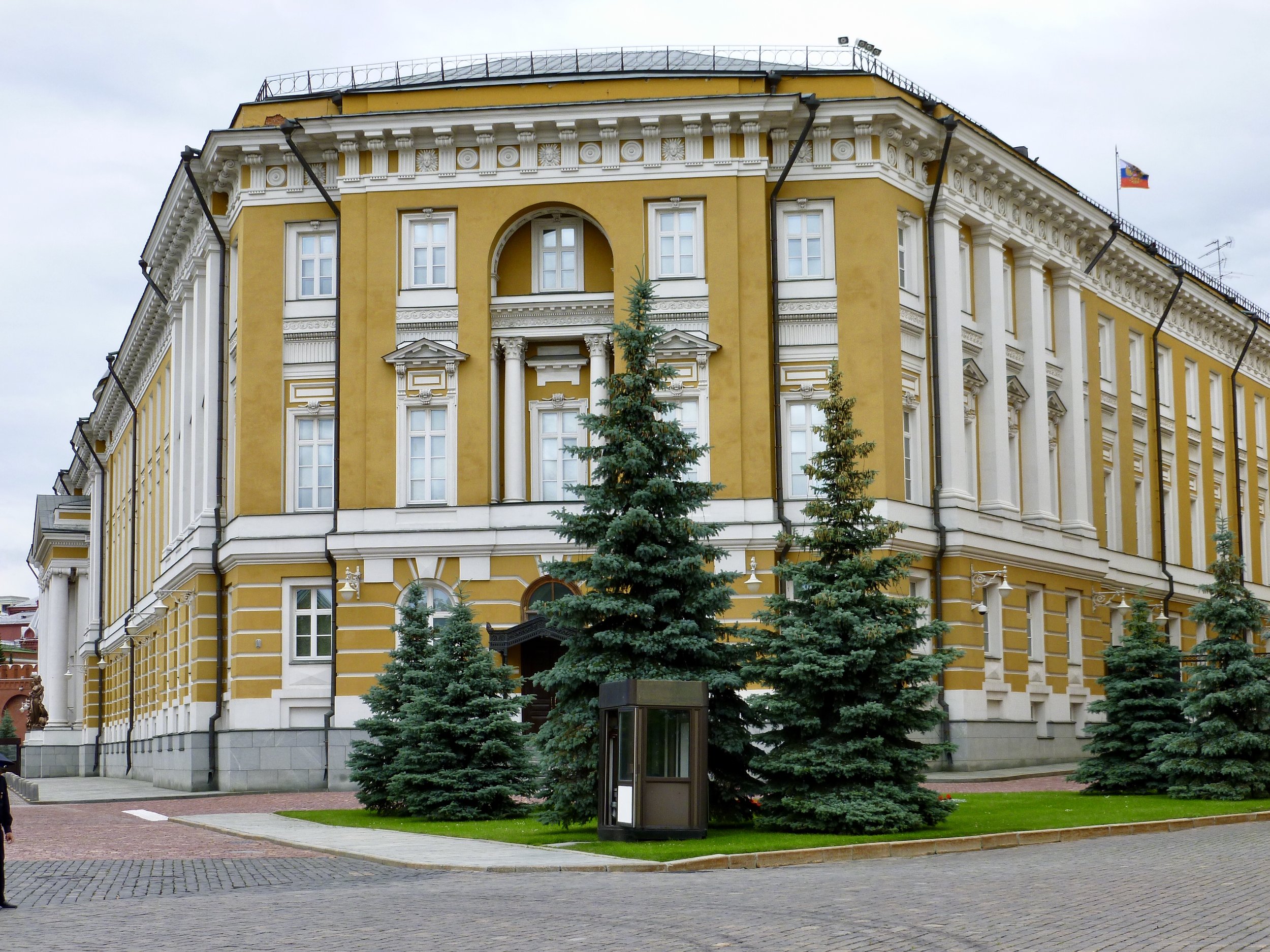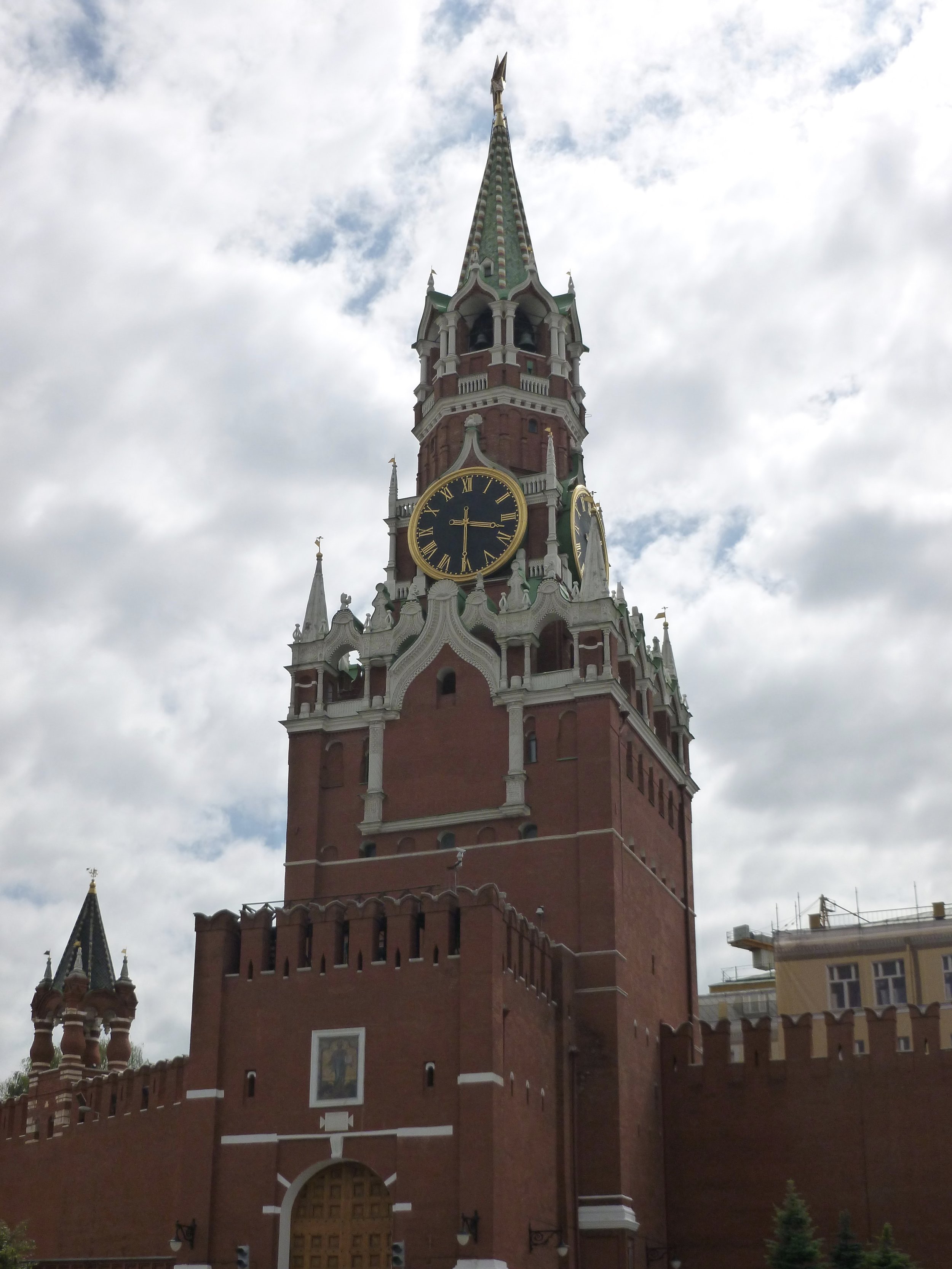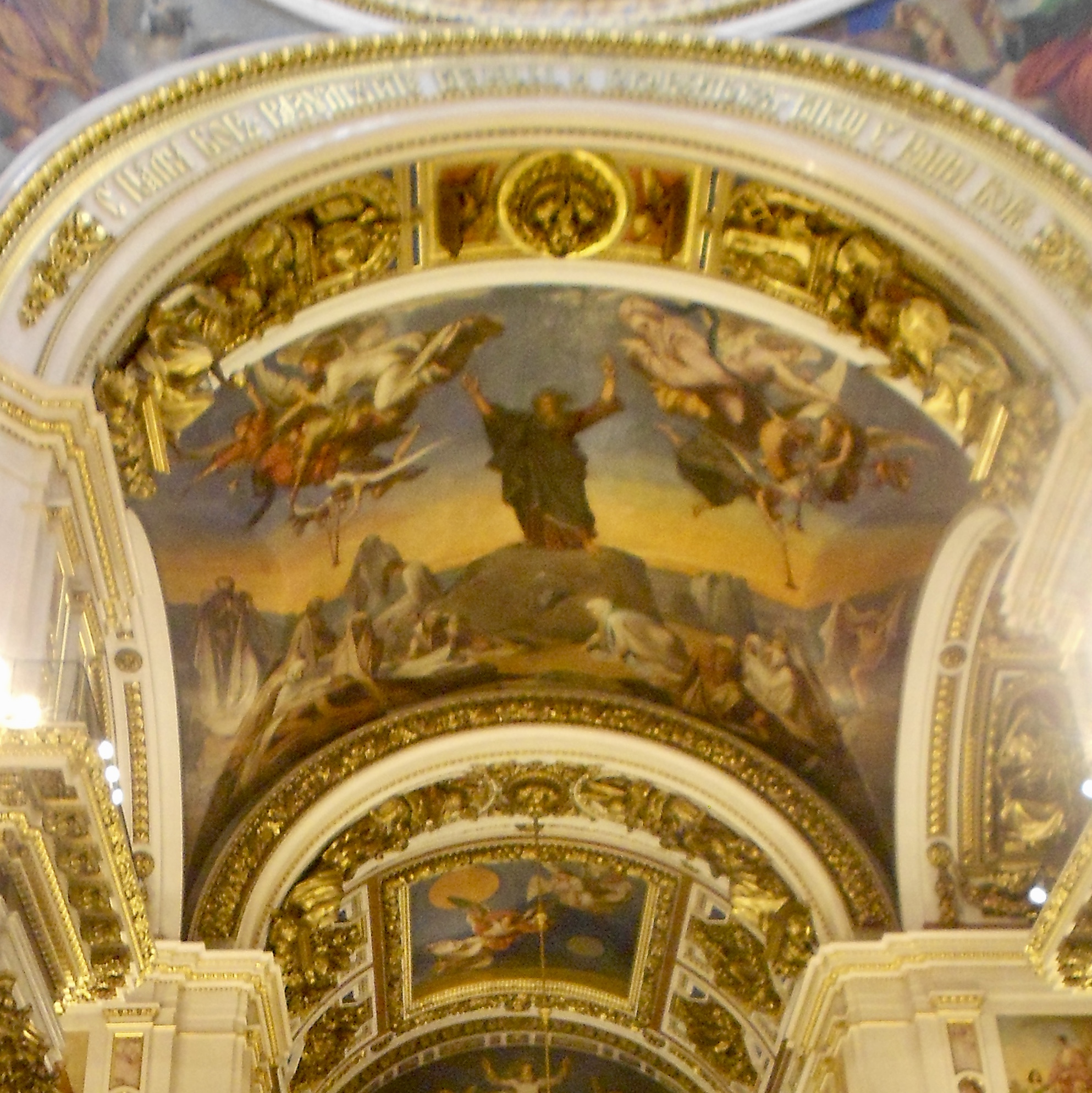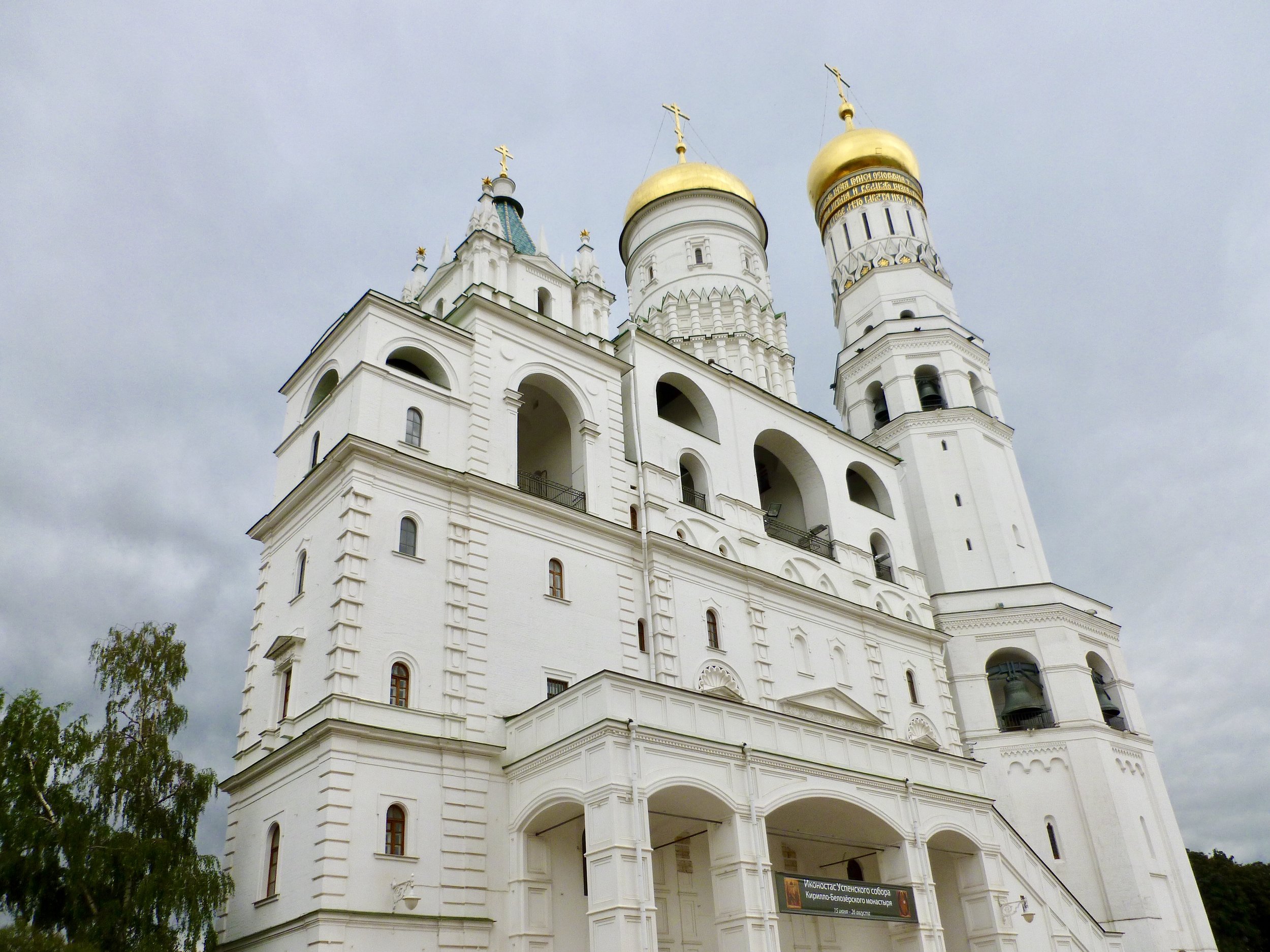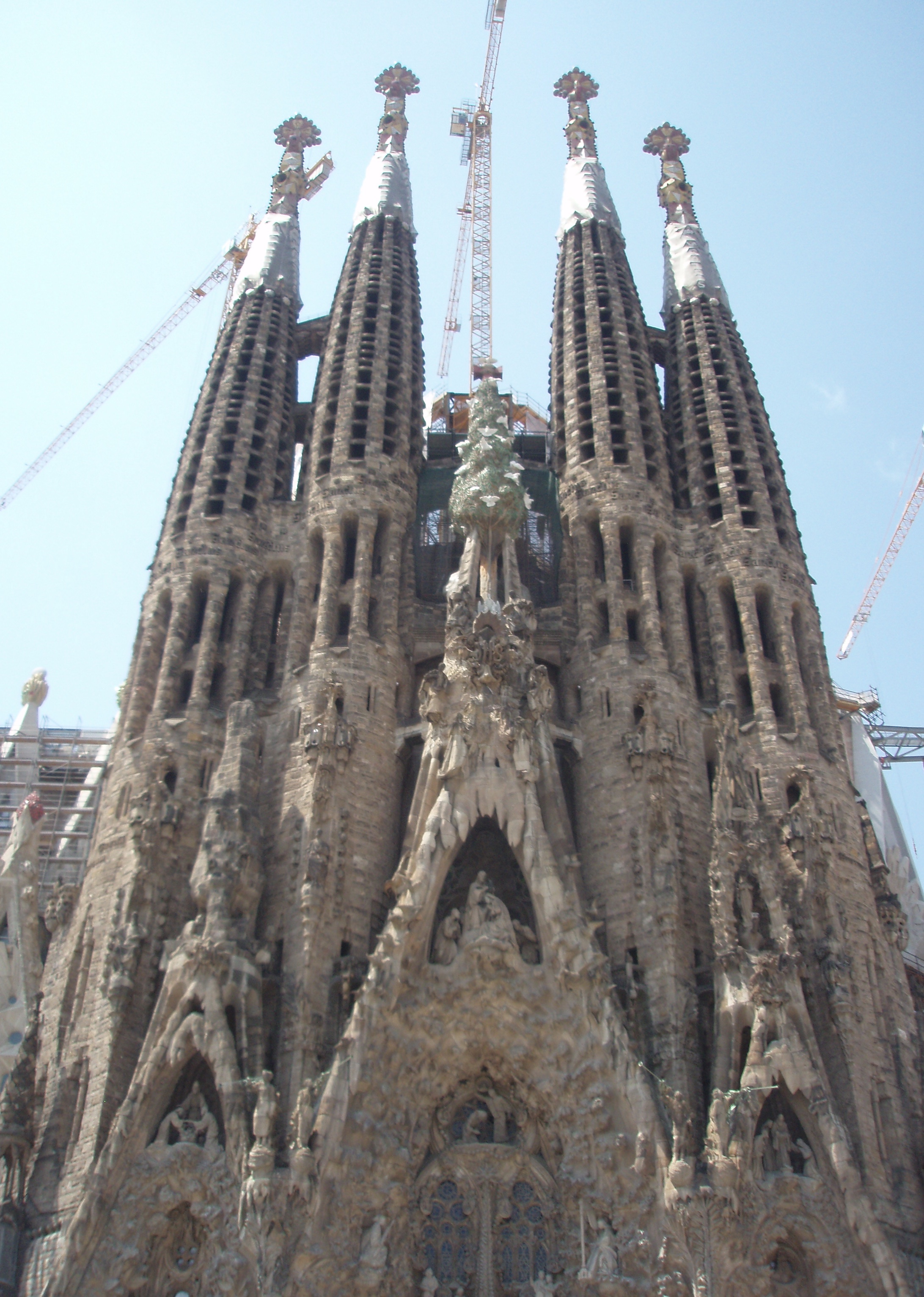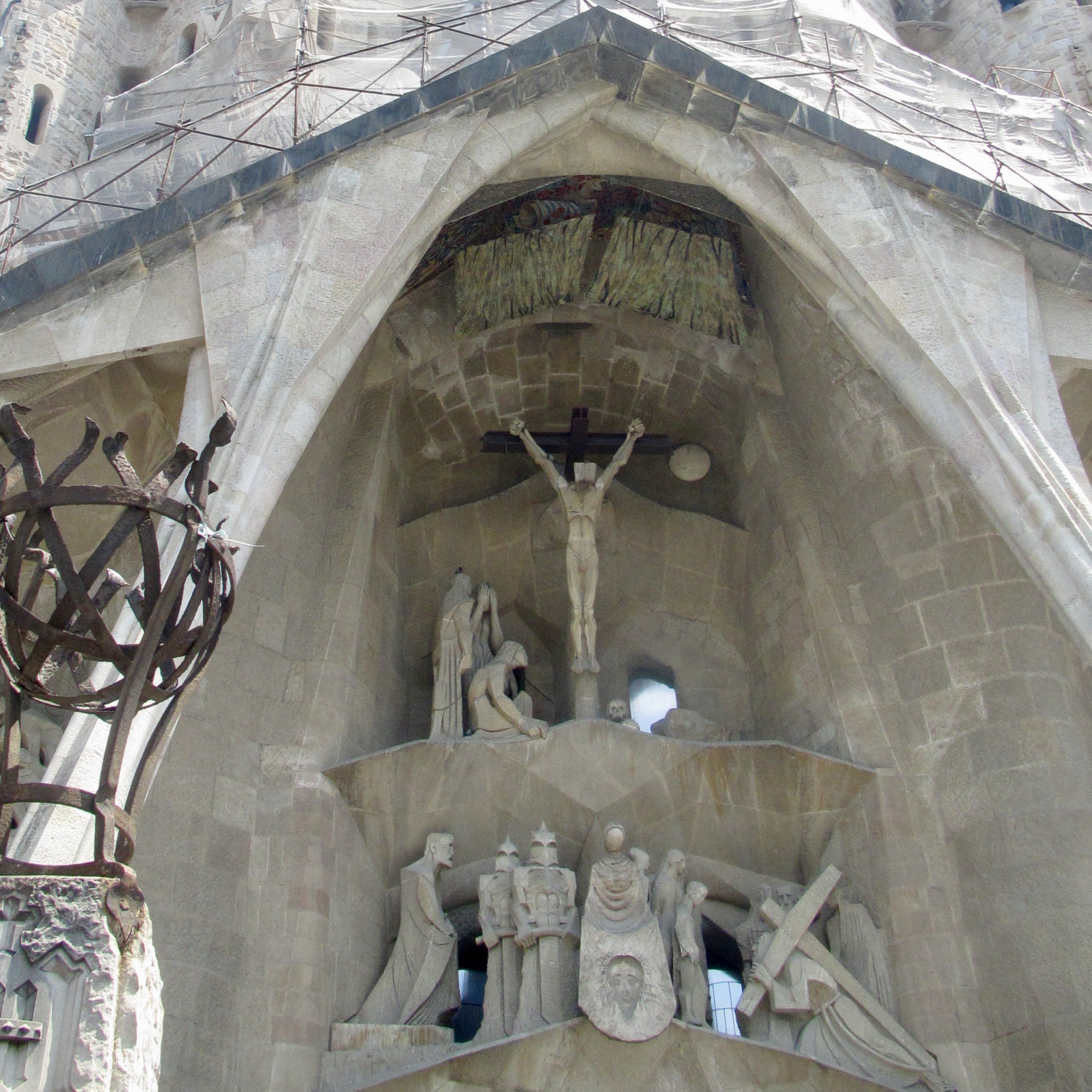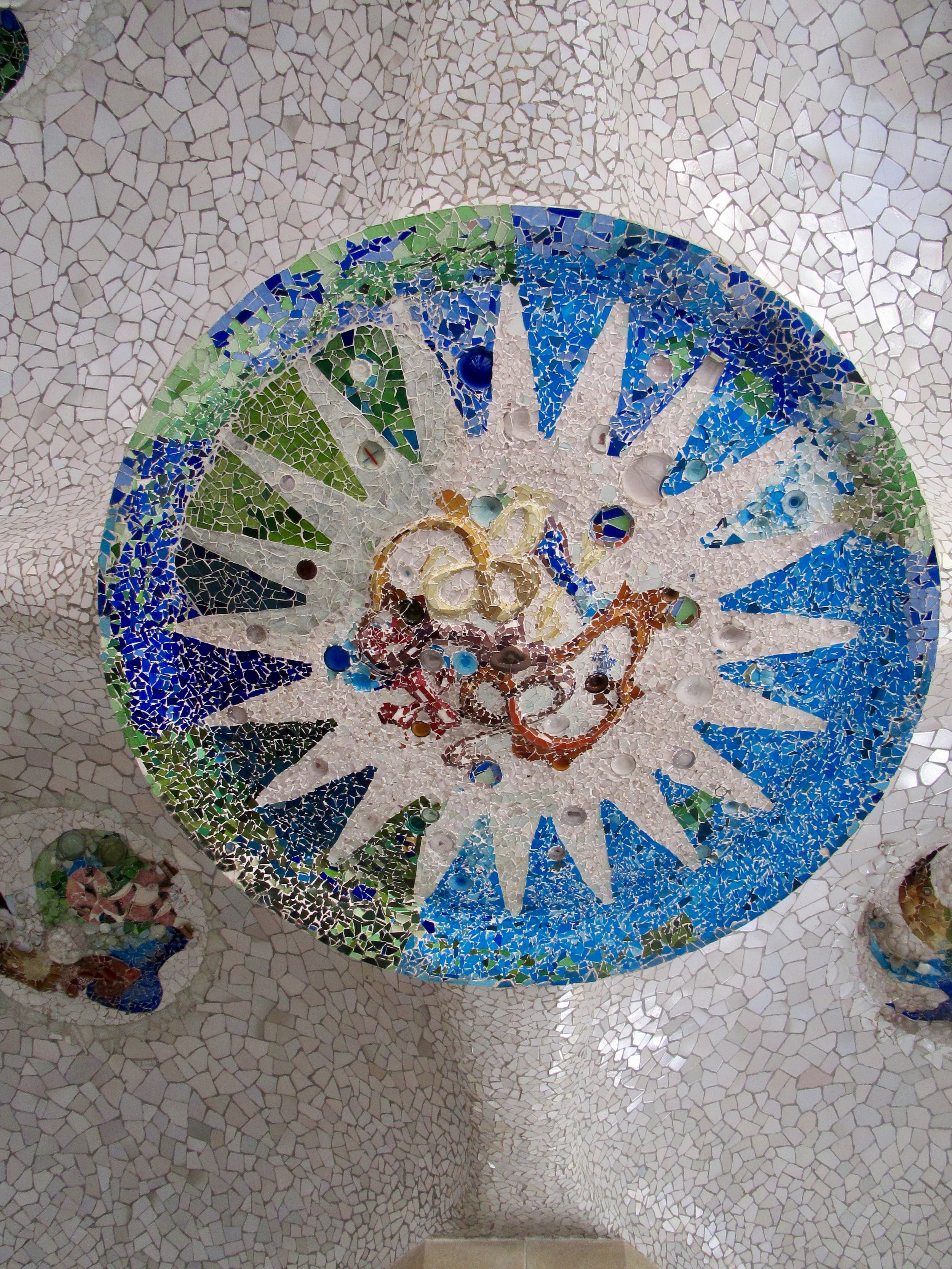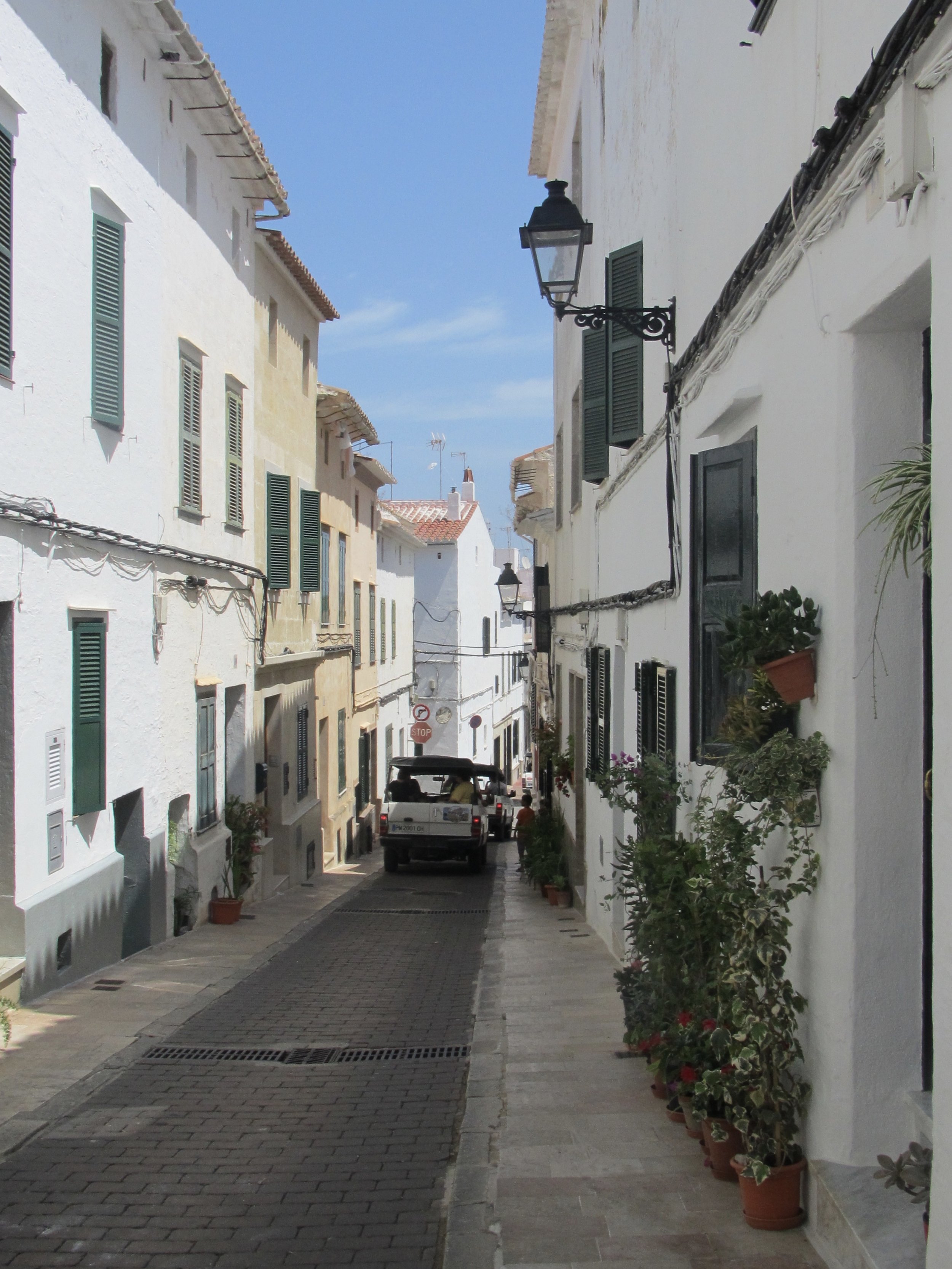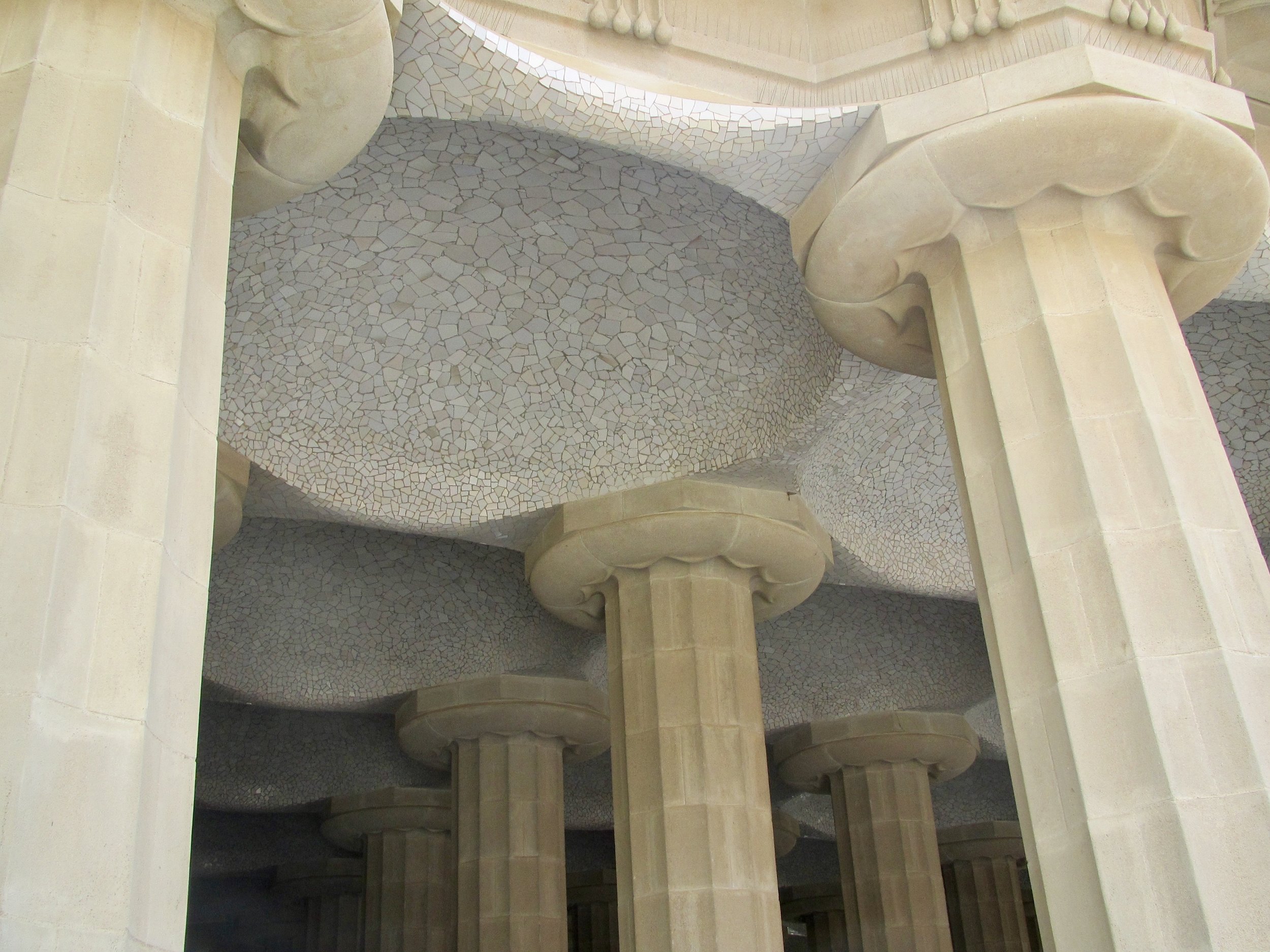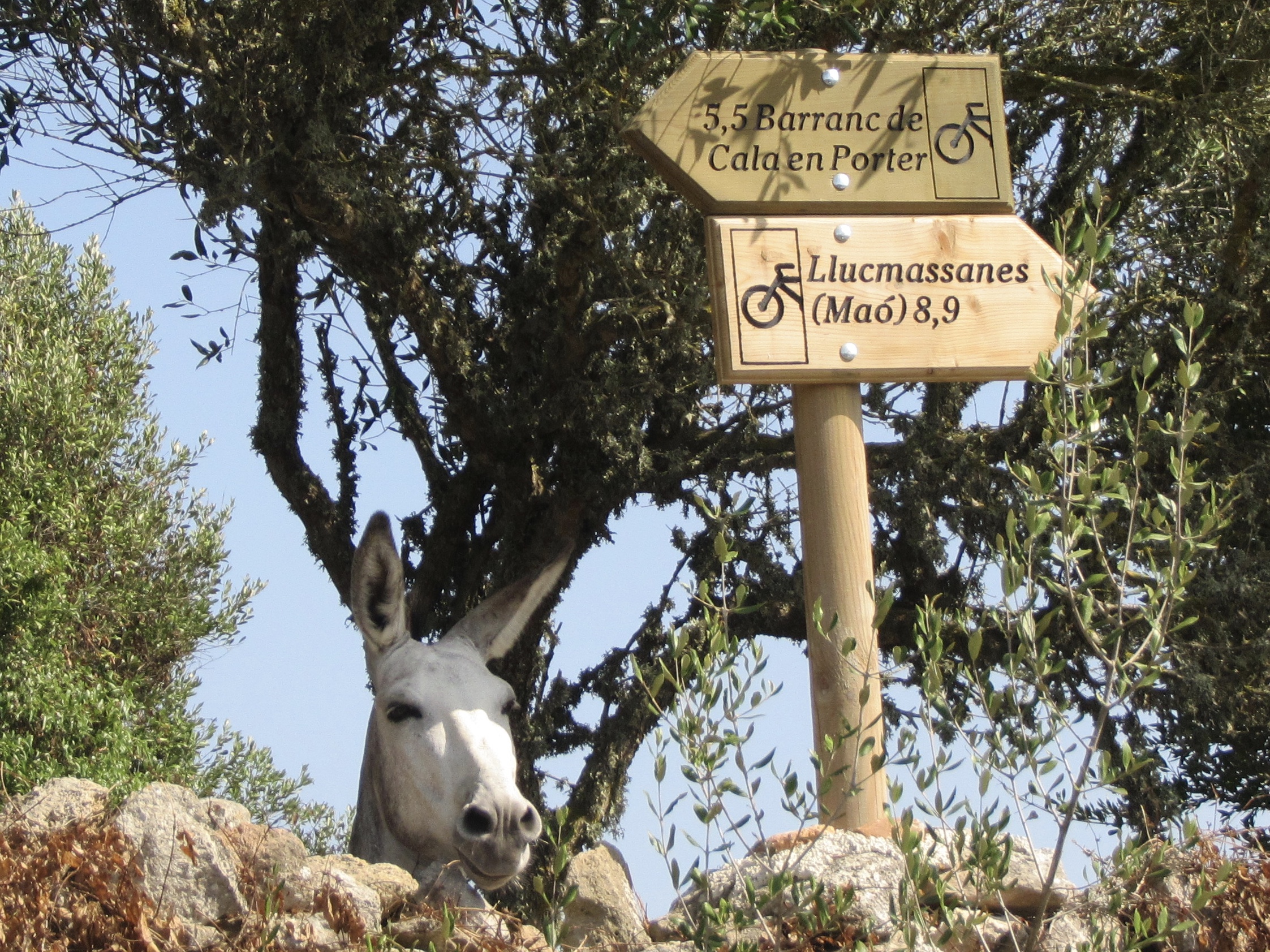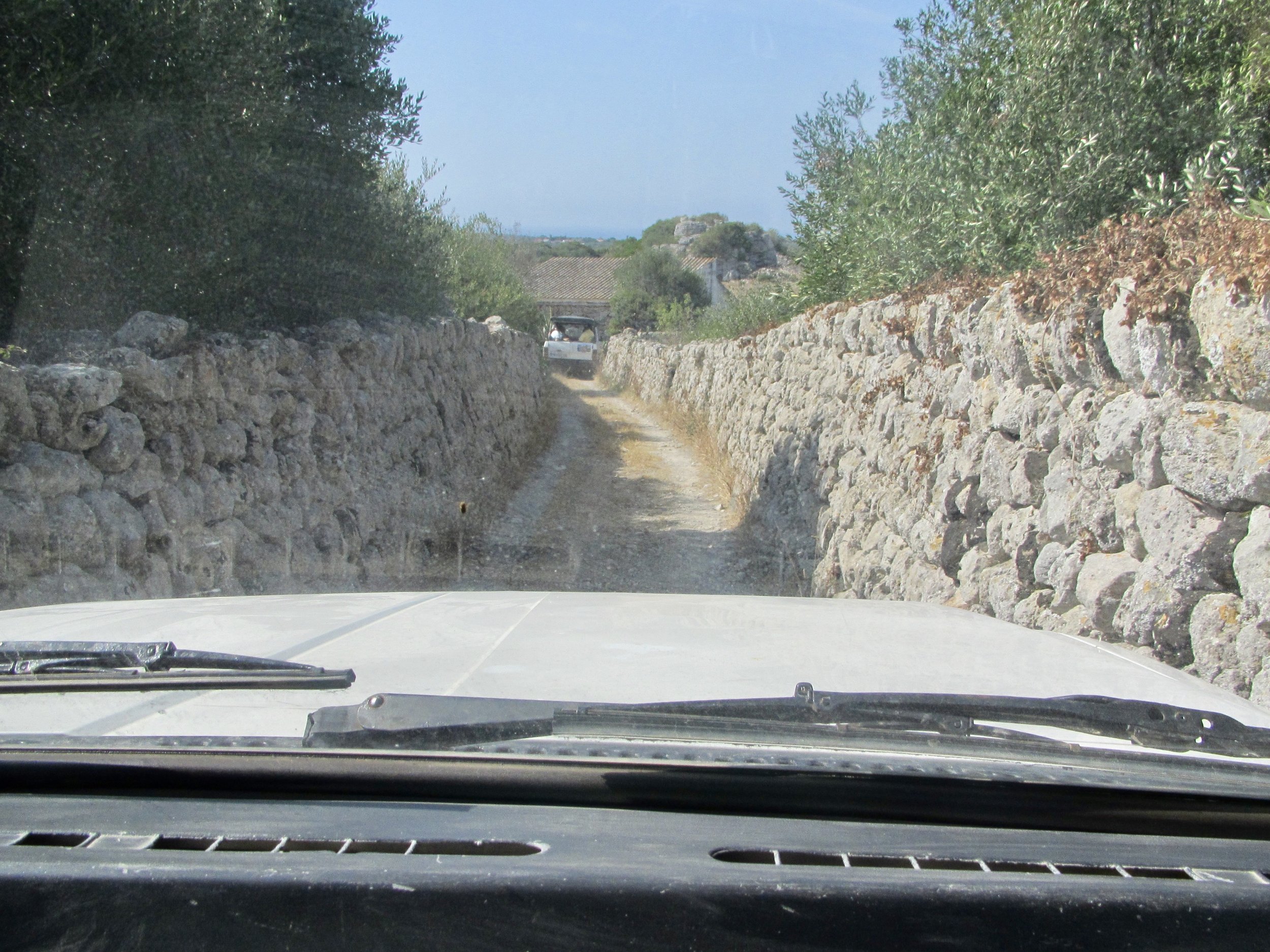Ha Long Bay, a UNESCO World Heritage Site, includes some 1,600 islands and islets forming a spectacular seascape of limestone pillars. This shot was taken from Sung Sôt or “Surprise Cave” which is one of the largest grottoes in Vietnam’s Ha Long Bay.
One of the guardian gods at the North entrance of Angkor Thom in Cambodia. The statues symbolize the battle between good and evil, with one side of the gateway being the devas (gods), and on the other are the asuras (demons). They represent characters from the “Churning of the Ocean of Milk”, a Hindu creation myth depicted throughout temples in the Angkor area.
Young Cambodian girl in the Village of Kampong Cham off Tonlé Sap and the Mekong River.
Colorful bracelets are left on the fence around one of the mass graves at Choeung Ek, a `Killing Fields` site on the outskirts of Phnom Penh, Cambodia where thousands of victims of the Khmer Rouge regime were killed.
The Bayon is a richly decorated Khmer temple at Angkor in Cambodia. It stands at the center of Angkor Thom
The north gate entrance to Angkor Thom is lined with sculptures of the guardian gods (devas) pulling the head of the snake (Shesha) in tandem.
Looking up to the roof at Ta Prohm Temple in Angkor, Cambodia, light rain joined bright sunshine.
The Terrace of the Elephants was used as a giant reviewing stand for public ceremonies and served as a base for the king's grand audience hall. It has five outworks extending towards the Central Square-three in the center and one at each end. The middle section of the retaining wall is decorated with life-size garuda and lions; towards either end are the two parts of the famous parade of elephants complete with their Khmer mahouts.
Buddha's statue in the Vipassana Dhura Buddhist Meditation Center in Oudong, Cambodia’s former capital
The largest of all Angkor's temples and one of the best preserved. Surrounded by a huge rectangular reservoir and an outer wall measuring over 3km in length, the temple consists of three tiered galleries and five towers shaped like lotus buds.
This World Heritage Site is the epitome of the high classical style of Khmer architecture, and it has become a symbol of Cambodia, appearing on its national flag.
Angkor is also a vernacular form of the word nokor, which comes from the Sanskrit word nagara (capital), while Wat is the Khmer word for temple.
The monks of the Oudong Buddhist Monastery in Cambodia carved and maintain this amazing topiary gazebo.
According to Buddhist myths, Phra Mae Thorani is personified as a young woman wringing the cool waters of detachment out of her hair to drown Mara, the demon sent to tempt Gautama Buddha as he meditated under the Bodhi Tree.
The Preah Thineang Chan Chhaya or "Moonlight Pavilion", is an open-air pavilion that serves as a stage for Khmer classical dance in the past and present. It is one of the most notable buildings of the palace as it is easily seen from the outside as it was built alongside a section of the palace walls.
The Tuol Sleng Genocide Museum or simply Tuol Sleng, is a museum chronicling the Cambodian genocide. Located in Phnom Penh, the site is a former secondary school that was used as Security Prison 21 by the Khmer Rouge regime from 1975 until its fall in 1979. From 1976 to 1979, an estimated 20,000 people were imprisoned at Tuol Sleng and it was one of between 150 and 196 torture and execution centers established by the Khmer Rouge and the secret police known as the Santebal (literally "keeper of peace").
Hanoi Hilton Museum in Vietnam. Sen. McCain spent parts of his five and a half years as a POW there.
St. Basil’s Cathedral in Moscow’s Red Square was built by Ivan the Terrible in the 1550s. This intriguing cathedral bordering Red Square consists of nine separate chapels, each capped with its own individually shaped and colored dome. It is one of the most popular cultural symbols of Russia.
This is the last standing monument to Karl Marx in Russia. It is a large statue, carved from a single stone block that also functions as the plinth. The inscription reads, “Proletarians of all countries, Unite!”
The interior of the Great Dome of St. Isaac's Cathedral.
Imperial Eagle atop the entrance to the Soviet-era State Kremlin Palace.
Two of the 22 bells of the Ivan the Great Bell Tower, the tallest of the towers in the Moscow Kremlin complex, built in 1508 for the Russian Orthodox cathedrals in Cathedral Square.
The Moscow Metro is the first underground railway system in the Soviet Union serving Moscow, and the neighboring Moscow Oblast cities of Krasnogorsk, Reutov, Lyubertsy and Kotelniki.
The Peterhof Palace is a series of palaces and gardens located in Peterhof, Saint Petersburg, Russia. Laid out on the orders of Peter the Great, these palaces and gardens are sometimes referred to as the "Russian Versailles". The palace-ensemble along with the city center is recognized as a UNESCO World Heritage Site.
The Ivan the Great Bell Tower is a church tower inside the Moscow Kremlin complex. With a total height of 81 meters (266 ft), it is the tallest tower and structure of the Kremlin.
The Kremlin Armoury, is one of the oldest museums of Moscow, established in 1851 and located in the Moscow Kremlin, now a part of Moscow Kremlin Museums. The Kremlin Armoury originated as the royal arsenal in 1508.
View from Peterhof Palace in St. Petersburg, Russia.
The Kremlin is a fortified complex at the heart of Moscow, overlooking the Moskva River to the south, Saint Basil’s Cathedral and Red Square to the east, and the Alexander Garden to the west.
Church of the Savior on Spilled Blood in St. Petersburg, Russia. This church was built on the site where Emperor Alexander II was fatally wounded by political nihilists in March 1881.
The south door to St. Isaac’s Cathedral depicts the visitation of the magi.
Catherine Palace and Park in Pushkin, Russia
Gilded Atlantis on the Exterior of Catherine Palace
Soviet Union star with hammer and sickle at the dome top of the Moscow Metro in Russia.
The Cathedral of Christ the Saviour is a Russian Orthodox cathedral in Moscow, Russia, on the northern bank of the Moskva River, a few hundred meters southwest of the Kremlin. With an overall height of 103 meters (338 ft), it is the third tallest Orthodox Christian church building in the world.
The current church is the second to stand on this site. The authentic church, built during the 19th century, was the scene of the 1882 world premiere of the 1812 Overture composed by Tchaikovsky.
The Kremlin Armory, is one of the oldest museums of Moscow, established in 1851 and located in the Moscow Kremlin, now a part of Moscow Kremlin Museums. The Kremlin Armory originated as the royal arsenal in 1508.
The Kremlin Regiment also called the Presidential Regiment is a unique military regiment and part of the Russian Federal Protective Service with the status of a special unit. The regiment ensures the security of the Kremlin, its treasures, and state officials. In accordance with the federal law of December 8, 1997 "On Immortalizing the Soviet People’s Victory in the Great Patriotic War of 1941–1945", the regiment also maintains a guard of honor at the eternal flame of the Tomb of the Unknown Soldier. The regiment is housed in the historic Kremlin Arsenal.
Moscow Clock Tower, is a historic clock on the Spasskaya Tower of Moscow Kremlin. The clock dial is above the main gates to Red Square. For decades, the chimes have rung on the quarter-hour, with bells tolling for each full hour.
Royal Procession door to the Cathedral of the Dormition in the Moscow Kremlin in Russia.
Casa Milà, popularly known as La Pedrera or "The stone quarry", a reference to its unconventional rough-hewn appearance, is a modernist building in Barcelona, Catalonia, Spain. It was the last private residence designed by architect Antoni Gaudí and was built between 1906 and 1912.
The Basílica i Temple Expiatori de la Sagrada Família (Basilica and Expiatory Church of the Holy Family) is a large unfinished Roman Catholic church in Barcelona, designed by Catalan architect Antoni Gaudí (1852–1926). Gaudí's work on the building is part of a UNESCO World Heritage Site, and in November 2010 Pope Benedict XVI consecrated and proclaimed it a minor basilica, distinct from a cathedral, which must be the seat of a bishop.
Saint George is one of the most venerated saints in the Catholic Western and Eastern Rites, Anglican, Eastern Orthodox, and the Oriental Orthodox churches. He is immortalized in the tale of Saint George and the Dragon and is one of the Fourteen Holy Helpers. His memorial is celebrated on 23 April, and he is regarded as one of the most prominent military saints. This statue of Sant Jordi can be found in a niche when walking in the direction of the Monastir de Montserrat Church. It’s a work of Josep Maria Subirachs, a Catalan sculptor and painter of the late 20th century. His best known work is probably the Passion Facade of the basilica of the Sagrada Familia in Barcelona.
La Sagrada Família is a large unfinished Roman Catholic church in Barcelona, Spain designed by Catalan architect Antoni Gaudí (1852–1926). Gaudí's work on the building is part of a UNESCO World Heritage Site, and in November 2010 Pope Benedict XVI consecrated and proclaimed it a minor basilica, distinct from a cathedral, which must be the seat of a bishop.
Santa Maria de Montserrat is an abbey of the Order of Saint Benedict located on the mountain of Montserrat in Catalonia, Spain. It is notable for enshrining the image of the Virgin of Montserrat. The monastery was founded in the 11th century and rebuilt between the 19th and 20th centuries, and still functions to this day, with over 70 monks.
One of Antoni Gaudi’s unique mosaic tiles on the ceiling of the Hypostyle room of Park Güell in Barcelona, Spain.
The streets of Mahón, the capital city of the island of Menorca. It has one of the largest natural harbours in the world: 5 km (3.1 mi) long and up to 900 metres (2,953 feet) wide. The water is deep but it remains mostly clear due to it being slightly enclosed. It is also said to be the birthplace of mayonnaise.
The Park Güell is a public park system composed of gardens and architectonic elements located on Carmel Hill, in Barcelona, Spain. With urbanization in mind, Eusebi Güell assigned the design of the park to Antoni Gaudí, a renowned architect and the face of Catalan modernism. The park was built between 1900 and 1914 and was officially opened as a public park in 1926. In 1984, UNESCO declared the park a World Heritage Site under `Works of Antoni Gaudí`.
These columns are called the Doric columns. They support the roof of the lower court which forms the central terrace, with serpentine bench around the edge. Eusebi Güell assigned the design of the Park Grüell to Antoni Gaudí, a renowned architect and the face of Catalan modernism. The park was built between 1900 and 1914 and was officially opened as a public park in 1926. In 1984, UNESCO declared the park a World Heritage Site under `Works of Antoni Gaudí`.

